#merchant navy (uk)
Explore tagged Tumblr posts
Text
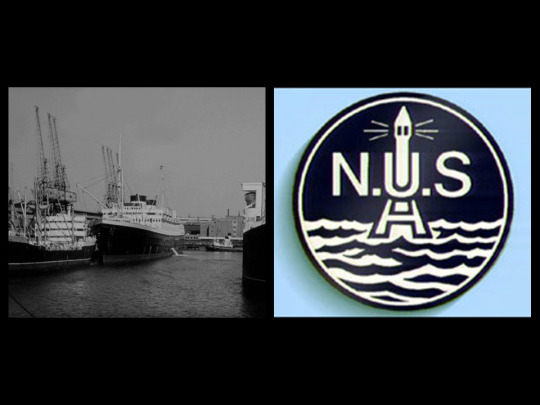
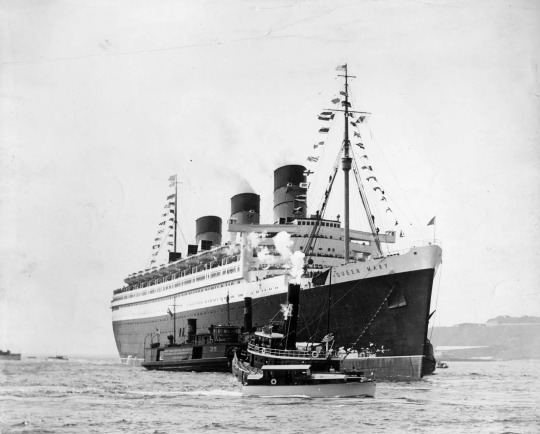
This week in 1966, (May 22nd), the Labour government of Harold Wilson declared a State of Emergency, one week into a strike by UK merchant mariners. This would provide the legal power to, amongst other things, cap food prices, and allow the Royal Navy to take control of shipping in British harbours. The Prime Minister told the House of Commons that such powers would not be used unless absolutely necessary, stating, "The government must protect the vital interests of the nation. This is not action against the National Union of Seamen."
International shipping had all but ground to a halt. Around 40 million pounds worth of exports were tied up, and both freight and passenger services were paralysed. As soon as the Queen Mary arrived in Southampton from New York carrying 850 passengers, 900 crew members immediately stopped work. (It's interesting to note the passenger-crew ratio, which speaks volumes about the state of transatlantic shipping at that time).
One of the union's demands was a reduction in working hours from 56 to 40 hours per week. Minister of Labour Ray Gunter conceded that pay and general working conditions for seamen needed to be modernised, but argued that the overtime claims that would inevitably result from the change in conditions the union was demanding, would derail the government’s attempts at wage restraint and their fight against inflation.
A week later, on May 28th, the Prime Minister upped the rhetoric, alleging that Communists were using the strike to gain influence over the National Union of Seamen. He said they were "endangering the security of the industry and the economic welfare of the nation". Not all of the governing Labour Party approved of Harold Wilson's new hard-line approach, but the strike then quickly ended, following a compromise between the union and shipowners, and the government’s commitment to set up an inquiry into employment conditions for merchant mariners.
(Main Source; BBC News)
#social history#uk politics#working class history#modern history#international shipping#merchant navy#maritime history#trade unions#workers rights#industrial action
24 notes
·
View notes
Text
Russian bomber pilots hit a grain ship in the Black Sea by mistake as they “targeted it in haste” and wanted to fly away quickly to avoid Ukrainian air defences, say British defence chiefs.
The Ministry of Defence in London believes that the merchant vessel Aya may only have escaped catastrophic damage because of a “detonation failure” in the “aging munition” fired at it.
In its latest intelligence update, the MoD said: “On 11 September 2024, the merchant vessel Aya was struck by a missile in the Black Sea as it transited south from the Ukrainian port of Odesa having been loaded with more than 26 thousand tons of grain bound for Egypt.
“It is almost certain that the missile was an AS-4 KITCHEN anti-ship missile launched by a Tu-22M3 BACKFIRE Russian bomber that was operating in the area at the time. It is a realistic possibility that a detonation failure avoided catastrophic damage.”
Russian and Ukrainian forces have fought a series of battles along the Black Sea coastline, and out at sea, including over Snake Island, which was captured by Vladimir Putin’s forces before being seized back, and the sinking of the flagship Moskva warship.
The Russian navy was forced to retreat from the Black Sea after the port of Sevastopol in Crimea was targeted.
But the British military chiefs do not believe that the grain vessel was hit on purpose and instead that it was “likely struck due to poor targeting procedures from Russian pilots using an aging munition”.
They added: “Following the loss of a BACKFIRE in April this year, Russia has almost certainly been more wary with their strike operations in the Black Sea.
“It is a realistic possibility this incident occurred due to pilots incorrectly identifying Aya as their target in haste, wanting to depart the area immediately after launch for fear of being targeted by a Ukrainian surface to air missile.
“The KITCHEN missile has consistently underperformed in the Ukraine conflict. Launching a supersonic cruise missile on an incorrect heading against a likely erroneous target in international waters demonstrates extremely poor and irresponsible aviation practice.”
Britain, the US, Ukraine and its allies have been fighting an information war, alongside the battlefield conflict, against Russia so their briefings need to be treated with caution.
However, they are far more believable than the propaganda issued by the Kremlin.
Meanwhile, Ukraine's armed forces commander General Oleksandr Syrskyi said on Thursday he had ordered defences to be strengthened in the eastern Donetsk region, a day after Kyiv forces announced they had withdrawn from the town of Vuhledar.
Russian troops are steadily inching forward in different sectors in eastern Ukraine despite Kyiv's surprise incursion into Russia's western Kursk region in August that it was hoped would slow the advances.
Syrskyi said on social media he was working on "one of the hottest front sectors" with the 25th Sicheslav Airborne Brigade.
He gave no details on the exact location but the brigade operates in the Pokrovsk front, an area of intensified Russian assaults.
"While working in the brigade, I made a number of decisions aimed at strengthening stability and effectiveness of our defence," Syrskyi said.
Russian forces launched a major drone attack overnight on 15 Ukrainian regions, causing damage to commercial and residential buildings, local authorities said on Thursday, though there were no immediate reports of any casualties.
The Ukrainian air force said it had shot down 78 out of 105 Russian drones during the assault, with 23 more likely impacted by active electronic jamming.
Authorities in the Ukrainian capital Kyiv said the air force had downed around 15 drones over the city and its surroundings during an air alert that lasted more than five hours.
A Russian drone targeted a truck delivering gas in Ukraine's northern Chernihiv region on Thursday, killing two adults and a child, police said.
Ukrainian drones attacked the "Borisoglebsk" military airfield and warehouses for fuel and guided bombs in Russia's Voronezh region overnight, according to a Ukrainian security source.
The security source said Ukraine's SBU security service was continuing actions to reduce the ability of Russian troops to use fighter jets with guided bombs to strike Ukrainian cities, and that attacks on Russian airfields would continue.
The drones attacked warehouses, parking lots for Russian Sukhoi Su-35 and Su-34 jets and aviation fuel storage facilities at the Borisoglebsk airfield, the source said.
"From there, the enemy actively bombards Ukrainian territories with guided bombs," he said.
Pictures on the attack and a short video clip showing fires could not be independently verified and the extent of the damage was not immediately clear.
Alexander Gusev, the governor of Russia's Voronezh region, said Russian air defence had shot down 10 drones over the region. He did not report any damage.
5 notes
·
View notes
Text
Holidays 9.3
Holidays
Andrew Luck Day (Indiana)
Anniversary of the End of the Second World War (Russia)
Another Luck Unlimited Day
Armed Forces Day (Taiwan)
Beslan Remembrance Day
Brazilian Day
Broadcast Day (South Korea)
Civil Aviation Day (Tajikistan)
Cromwell’s Day
Day of Universal Alarm
Day to Mourn All Manifestations of Sexism
Drexciya Day
Feast of Atqksak (Baffin Land)
Flag Day (Australia)
Foundation Day (San Marino)
Gaura Parba (Nepal)
Harvest Bell Day (a.k.a. Hare Bell)
Levy Mwanawasa Day (Zambia)
Lost Day
Lower Case Letter Day
Memorial Day (Tunisia)
Merchant Navy Day (UK)
Merchant Navy Remembrance Day (Canada)
National Army Day (Moldova)
National Dahlia Day
National Day of Prayer for the Victims of Hurricane Harvey
National Guard Day (Tajikistan)
National High Heels Day
National Holiday of Commemoration (Tunisia)
National Shoot Your Shot Day
National Stephen Day
National Wilderness Day
903 Day (Texas)
Penny Press Day
Richard the Lionheart Day (UK)
Skyscraper Day
Solidarity Against Terrorism Day (Russia)
Tales and Tallows Day (Elder Scrolls)
Teasel Day (French Republic)
That Day I’ll Always Remember (in the song “Papa Was a Rollin’ Stone,” by The Temptations)
Tokehega Day (Tokalau, New Zealand)
U.S. Bowling League Day
V-J Day (China)
World Day of Hygiene
Yamashita Surrender Day (Philippines)
Food & Drink Celebrations
Afternoon Tea Time Day
International Rosé Day
National Barbecue Baby Back Ribs Day
National Welsh Rarebit Day
Independence & Related Days
Bir Tawil (Declared; 2022) [unrecognized]
Day of Liberation of Monaco (Monaco)
Irida City Foundation Day (Philippines)
Mexico (Formally Recognized by US; 1923)
Qatar (from UK, 1971)
San Marino (Founded; 301 C.E.)
United States (Formally Recognized by Great Britain; 1783)
Yeesland (Declared; 2017) [unrecognized]
1st Tuesday in September
Another Look Unlimited Day [Tuesday after 1st Monday]
Camo Tuesday [1st Tuesday]
Play Days begin [Tuesday through Saturday after 1st Monday]
Protect Your Groundwater Day [1st Tuesday]
Taco Tuesday [Every Tuesday]
Takeout Tuesday [1st Tuesday of Each Month]
Target Tuesday [Every Tuesday]
Tater Tot Tuesday [Every Tuesday]
Telephone Tuesday [Tuesday after 1st Monday]
To-Do List Tuesday [1st Tuesday of Each Month]
Tranquil Tuesday [1st Tuesday of Each Month]
Trivia Tuesday [Every Tuesday]
Two For Tuesday [Every Tuesday]
World Art Drop Day [1st Tuesday]
Weekly Holidays beginning September 3 (1st Full Week of September)
Play Days (thru 9.7] [Tuesday thru Saturday after Labor Day]
Festivals Beginning September 3, 2024
Barbera Festival (Plymouth, California)
Bigsound (Brisbane City, Australia) [thru 9.5]
Tennessee Soybean Festival (Martin, Tennessee) [thru 9.7]
Van Buren County Livestock Show & Fair (Clinton, Arkansas) [thru 9.7]
Feast Days
Aigulf (Christian; Martyr)
Akwambo (Path Clearing Festival; Akan People of Ghana)
Alison Lurie (Writerism)
Armand Vaillancourt (Artology)
Baile and Ailinn (Celtic Book of Days)
Barkley (Muppetism)
Bengt Lindström (Artology)
Bernard de Pailissy (Positivist; Saint)
Cuthburga (Christian; Saint)
Day of Mimi’s Well (Pagan)
Day of Universal Alarm (Shamanism)
Drexciya Day
Gregory I, Pope (Christian; Saint)
Gregory the Great (Christian; Saint)
Hildelitha (Christian; Saint & Virgin)
John Picacio (Artology)
Joseph Wright (Artology)
Lawrence Clark Powell (Writerism)
Lawrence Welk Day (Church of the SubGenius; Saint)
Macnisius of Ireland (Christian; Saint)
Maidens of the Four Directions (Hopi Native Americans)
Malcolm Gladwell (Writerism)
Mansuetus of Toul (Christian; Saint)
Marinus (Christian; Saint)
Mort Walker (Artology)
Paul Kane (Artology)
Phoebe (Christian; Saint)
Pius X, pope (Christian; Saint)
Remaclus (Christian; Saint)
Prudence Crandall (Episcopal Church (USA))
Sarah Orne Jewett (Writerism)
Say No to Haggis Day (Pastafarian)
Simeon Stylites the Younger (Christian; Saint)
Wendy O. Williams Day (Church of the SubGenius; Saint)
Lucky & Unlucky Days
Dismal Day (Unlucky or Evil Day; Medieval Europe; 17 of 24)
Egyptian Day (Unlucky Day; Middle Ages Europe) [17 of 24]
Fatal Day (Pagan) [17 of 24]
Lucky Day (Philippines) [49 of 71]
Sakimake (先負 Japan) [Bad luck in the morning, good luck in the afternoon.]
Unlucky Day (Grafton’s Manual of 1565) [40 of 60]
Premieres
Bosko the Lumberjack (WB LT Cartoon; 1932)
Cartoons Ain’t Human (Fleischer/Famous Popeye Cartoon; 1943)
The Cat and the Mermouse (Tom & Jerry Cartoon; 1949)
Dime to Retire (WB LT Cartoon; 1955)
Do You Really Want To Hurt Me?, by Culture Club (UK Song; 1982)
Fantastic Voyage, by Isaac Asimov (Novel; 1966)
From Hare to Heir (WB MM Cartoon; 1960)
Funf Orchesterstucke (Five Pieces for Orchestra), by Arnold Schoenberg (1912)
Funny Business in the Books or The Library Card (Rocky & Bullwinkle Cartoon, S5, Ep. 210; 1963)
Going the Distance (Film; 2010)
The Gold Rush, featuring Flip the Frog (MGM Cartoon; 1932)
Goodnight Moon, by Margaret Wise Brown (Children’s Book; 1947)
Johnny Got His Gun, by Dalton Trumbo (Novel; 1939)
Listen Without Prejudice, by George Michael (Album; 1990)
Machete (Film; 2010)
The Man in the Queue, by Josephine Tey (Novel; 1929) [Alan Grant #1]
Mister and Mistletoe (Fleischer/Famous Popeye Cartoon; 1955)
Never Go Back, 18th Jack Reacher book, by Lee Child (Novel; 2013)
Old Smokey, featuring the Captain and the Kids (MGM Cartoon; 1938)
The Prisoner of Zenda (Film; 1937)
Roll the Bones, by Rush (Album; 1991)
The Sailor Who Fell from Grace with the Sea, by Yukio Mishima (Novel; 1963)
Scooby-Doo! In Arabian Nights (WB Animated Film; 1994)
Scooby-Doo! Return to Zombie Island (WB Animated Film; 2019)
Search for Tomorrow (TV Soap Opera; 1951)
Shang-Chi and the Legend of the Ten Rings (Film; 2021)
The Sky Scrapper (Oswald the Lucky Rabbit Disney Cartoon; 1928)
Snow Place Like Home (Fleischer/Famous Popeye Cartoon; 1948)
Something Happened, by Joseph Heller (Novel; 1974)
Special Delivery Stomp, recorded by Artie Shaw (Song;1940)
Tenet (Film; 2020)
Tom and Jerry: The Fast and the Furry (WB Animated Film; 2005)
Topsy Turvy World, Part 1 (Rocky & Bullwinkle Cartoon, S5, Ep. 209; 1963)
The Trouble with Girls (Elvis Presley Film; 1969) [#30]
The Villain Still Pursued Her (Terrytoons Cartoon; 1937)
Ye Happy Pilgrims (Oswald the Lucky Rabbit Cartoon; 1934)
Today’s Name Days
George, Gregor, Silvia, Sophie (Austria)
Gordana, Grga, Grgur (Croatia)
Bronislav (Czech Republic)
Seraphia (Denmark)
Solveig, Veegi (Estonia)
Soila, Soile, Soili (Finland)
Grégoire (France)
Gregor, Phoebe, Silvia, Sonja (Germany)
Anthimos, Arhontia, Arhontion, Aristea, Ariston, Phoebe, Phoebi, Phevos, Polydoros (Greece)
Hilda (Hungary)
Fausto, Felice, Gregorio, Lorenzo, Marino, Rosa, Teodoro (Italy)
Bella, Berta, Klaudija, Klaudijs, Slaida (Latvia)
Bronislova, Bronislovas, Mirga, Sirtautas (Lithuania)
Alise, Alvhild, Vilde (Norway)
Antoni, Bartłomiej, Bazylissa, Bronisław, Bronisz, Erazma, Eufemia, Eufrozyna, Izabela, Jan, Joachim, Joachima, Manswet, Mojmir, Szymon, Wincenty, Zenon, Zenona (Poland)
Antim, Meletie, Neofit (Romania)
Belo (Slovakia)
Basilisa, Gregorio (Spain)
Alfhild, Alva (Sweden)
Page, Paige, Phebe, Phoebe, Phoebus (USA)
Today is Also…
Day of Year: Day 247 of 2024; 119 days remaining in the year
ISO: Day 2 of Week 36 of 2024
Celtic Tree Calendar: Muin (Vine) [Day 4 of 28]
Chinese: Month 8 (Guy-You), Day 1 (Geng-Wu)
Chinese Year of the: Dragon 4722 (until January 29, 2025) [Wu-Chen]
Hebrew: 30 Av 5784
Islamic: 28 Safar 1446
J Cal: 7 Gold; Sevenday [6 of 30]
Julian: 21 August 2024
Moon: 1%: Waxing Crescent
Positivist: 23 Gutenberg (9th Month) [Riquet]
Runic Half Month: Rad (Motion) [Day 12 of 15]
Season: Summer (Day 76 of 94)
Week: 1st Full Week of September
Zodiac: Virgo (Day 13 of 32)
Calendar Changes
桂月 [Guìyuè] (Chinese Lunisolar Calendar) [Month 8 of 12] (Osmanthus Month) [Earthly Branch: Rooster Month] (Bāyuè; Eighth Month)
2 notes
·
View notes
Text

Jose Backstory Analysis (Version 3)
(Based on his backstory, deductions, letters, and other material)
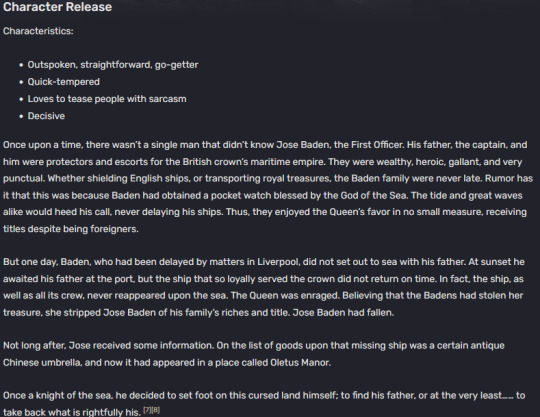
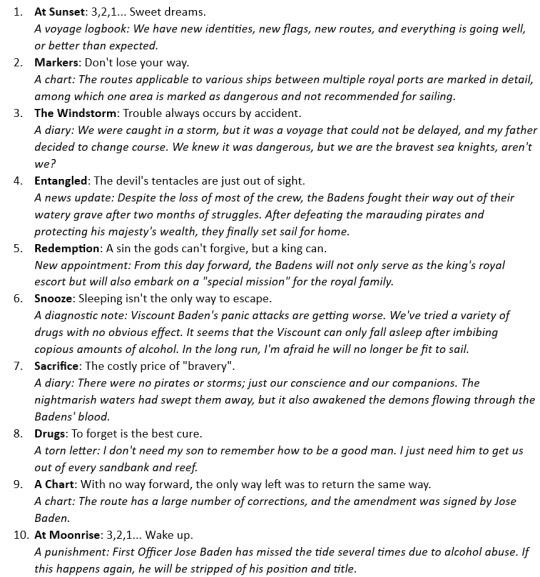
Spanish Origins
We know from Paella, Jose’s food dish which references “Spanish sailors”, combined with implications from Jose’s 1st deduction that he was likely born in Spain.
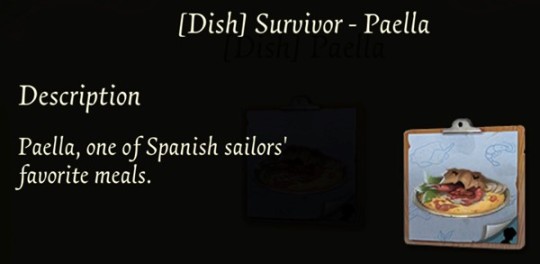
Paella is a Spanish rice dish made using a variety of ingredients (all families have a different way they prepare it). The word itself comes from a Valencian word that refers to the pan the dish is cooked in. It was originally made with rice combined with whatever else was available locally, and is traditionally served family style, with the pan in the center of the table which people would eat straight from using only a spoon.
Paella Valenciana is said to be made with chicken, rabbit, and varieties of Spanish green beans (as well as saffron, paprika, and potentially several other spices).
Paella de Marisco (Seafood Paella) is made with seafood (rather than meat like chicken).
Paella Mixta (Mixed Paella) uses both meat like chicken and seafood.
The paella in-game appears to be Seafood Paella.
The story of Identity V takes place at the end the 19th century. As Jose is stated to be 25 years old, that means he was likely born around the 1870s, a time when Spain was going through both political and economic turmoil.
Politically, it was going through a revolution that overthrew the current Queen, a failed attempt at a republic, and a coup before the restoration of the Bourbon monarchy.
As for economic problems, this was a period of economic recession and high unemployment. The country had been dealing with several conflicts, including the Carlist Wars and Ten Years' War in Cuba, leaving the country in deep debt. Falling into recession, the government attempted to modernize the economy, but political instability, social unrest, and resistance made it difficult.
The Third Carlist War was from 1872-1876. The Spanish Navy (which Jose's father at least may have been a part of) would've been tasked with controlling the seas and protecting Spanish interests, but they faced a lack of resources and equipment, in part due to the government's financial issues, potential budget cuts, and the above conflicts.
Joining the British Navy
From deduction 1’s mention of “new identities, new flags, new routes” combined with Jose’s backstory and the reasons above, they likely came to Britain to get away from the turmoil and conflict in the hopes of finding better opportunities (especially in terms of a job and pay) and a better life.
As Jose’s backstory implies people saw them as “foreigners”, it is doubtful they’d been in Britain long enough to become naturalized citizens before they joined the Navy.
To become a naturalized citizen, this would require them to live in Britain for 5 years and fulfill a few other requirements (good character reference, knowledge of the English language, apply for eligibility, etc...).
In 1870, they wouldn't have been able to become citizens by marrying a British citizen as the British Naturalization Act of 1870 made it so a British woman who married a foreign man would lose their British nationality.
At the very least, a different section of that law did state that children under the age of 21 of a naturalized father (or widowed mother) were deemed to be naturalized if they were resident in the UK with the father (or widowed mother).
This is important to note that the Royal Navy didn’t accept foreigners.
According to “The Queens Regulations and the Admiralty Instructions of 1861” it states that “Foreigners are not to be entered for Her Majesty's Service in any capacity, except as Bandsmen, unless with the sanction of the Admiralty, if on the home station, or of the Commander-in-chief, if abroad; but under no circumstances are foreigners to be entered for continuous service.”
On the other hand, the British Merchant Navy did, and in fact recruited a considerable number of them.
The Navigation Laws by that time, which previously restricted foreigners from serving in the British Merchant Navy, were relaxed.
The Merchant Shipping Act similarly had few requirements or restrictions on who could serve besides having some general standards for all seamen. It didn’t even really make a distinction between British or foreign seamen.
Many foreigners were attracted to the British Merchant Navy due to the employment opportunities, chance to travel to new places, and the potential for higher wages than they could earn in their home countries.
The issue with both the Royal Navy and Merchant Navy though were the minimum age restrictions.
For apprentices in the Merchant Navy, the minimum age seems to have been around 12.
For the Royal Navy, the minimum age back then (according to the Queen’s Regulations and Admiralty Instructions of 1861) was 14. Additionally:
The minimum height for boys aged 14 or 15 was 4 feet 8 inches.
They also needed to have a "robust frame, perfectly sound and healthy constitution, free from any physical malformation, and intelligent, a preference being given to those who can read and write".
The boys also had to bring some satisfactory proof of their age (ex: declaration of birth or certificate) as well as the consent in writing of their parents to enter the Navy.
They would then undergo a medical examination.
After the exam, they would be engaged to serve in the Navy "continuously for 10 years from the age of 18, in addition to whatever period may be necessary until they attain that age."
Part of the reason for the minimum age restrictions may have been due to compulsory schooling being a thing that was introduced around 1880 up to the age of 11.
With Jose 10 years old or potentially younger, he would’ve been below that minimum age requirement. Despite this, a number of children did join the Navy even though they were too young. They did this either by lying, falsifying documentation (such as birth documents), via their parents influencing recruiting officials (as in to look the other way for example), or so on.
Some boys wanted to be sailors after hearing tales from others, being encouraged by friends, out of necessity if their families fell on hard times and to escape poverty, or if they were orphans they’d do it just so they could acquire some kind of food and shelter.
Considering the sort of economic and political turmoil going on in Spain at this time, it wouldn't be too hard to believe Jose did this out of necessity, potentially to help his father. Since Jose’s social status is stated to be Nouveau riche, meaning they likely got their wealth after the incident in deduction 3 and 4 when they were rewarded by the Queen herself, that implies they could’ve been much worse off when they were still in Spain as well as when they 1st came to Britain.
Since Jose states he sees themselves as “brave knights of the sea”, it is also likely he was inspired to want to join by tales from other sailors too.
Since the 2nd half of deduction 1 is “everything is going well, or better than expected” (or “it’s all going off without a hitch. Or at least, with less hitches than we thought there’d be” based on the translated version), which is phrased as if they expected issues or for things to go badly, when combined with the phrasing of them getting “new identities”, it’s highly possible the reason they might have issues is because they were using fake identities.
Fake identities (aka aliases or assumed names) were something people did in fact sometimes create/use, even when signing up for the Navy back then.
It’s possible we can look at Wu Chang’s 4th letter as evidence of this, considering “Chang XXXX” has seemingly changed his name “many times”, and he is implied to also be a sailor based on the description. There's also how Chang Chip is the name of 1 of the 6 Chinese survivors of the sinking of the Titanic (which ties to that “huge boat” they were mentioned to have boarded together). After the event, they were sent to the UK to support the sailor shortage during World War 1, so there’s a good chance Chang was as well.
This fake identity could’ve included a fake age for Jose. It’s also possible their “fake identities” could imply they were using other fake information, such as fake names (maybe “Baden” wasn’t their real last name, maybe “Jose” isn’t either) or fake countries of origin (as in, they pretended to come from someplace else, like Germany, instead of Spain, which could fit considering “Baden”, at least to my knowledge, isn’t a Spanish name and might actually be a German surname).
The need for fake identities may also imply Jose’s father at least (as he is older and has done more things than Jose, potentially bad things) had something he wanted to hide, or something about his past he didn’t want others to know about when he came to Britain. I’m doubtful he could’ve already been a pirate or privateer, as neither really existed by the late 19th century, but it’s hard to say for certain.
Going back to Jose’s deduction 1 where it says things are going “better than expected”, I do wonder if this could’ve potentially been written by Jose’s father rather than Jose himself (considering both their ages and the authority Jose’s father had).
Jose’s deduction 3 and his backstory imply Jose’s father already had some kind of authority and may have already been a captain despite them still being foreigners, as it says it was his father’s decision to change course. This is a decision that’s normally made by the captain.
If Jose’s father was a captain, with his influence, it likely would’ve been a bit easier for Jose to get into the Navy if he were below the minimum age requirement (especially as it wasn’t monitored as closely as it is today).
Captains tended to not like hiring younger boys, which they saw as a "burden on their profits" (expensive to train, cost money to be fed, etc...) and for the 1st year or so gave little in the way of labor back to the owner. Most captains wanted men who had some training, not weak young boys with potentially little or no education.
Examples of potential jobs/roles for young boys:
Cabin boys (cleaning cabins, running errands for officers, assisting with maintenance)
Powder monkeys (carrying gunpowder to cannons)
Runners (carry messages)
Ship’s cook
Had almost no qualifications to be one back then.
Entry-level profession for young men or boys with no particular experience with cooking or sailing.
Commonly given to foreigners.
Back in the 19th century, it wasn’t seen as “men’s work” and so some tended to give to those without the rights skills or to those they saw as inferior.
There are examples of foreigners who started as cooks and became Captains later.
The life of a sailor wasn’t an easy one, especially for the young. Reasons like those listed below were why this life was viewed as “masculine” and “heroic”:
Lack of sleep was common (especially with the Naval Watch System, meaning 4-6 hours of sleep was more common than a full 8)
The food tended to be of bad quality (and monotonous)
Long hours of back-breaking work
Required great discipline
Regular presence of physical danger
Side note regarding the Naval Watch System:
In the navy, ships always have a patrol to check everything and everyone on board to ensure all issues are identified and resolved swiftly. The entire crew, depending on the size, is divided into 2 or 3 "watches" (traditional royal navy used a 2-watch system) and assigned 1 of 2 watch groups: port and starboard. These were then split into different divisions and assigned a different area of the ship.
With the 2-watch system, sailors would work for 1 four-hour watch, then rest for 4 hours before working the next watch. So, sleeping patterns would be very different to those on land. The 3-watch system was more popular as it gave a much longer rest period between shifts.
Each watch fulfilled its tasks in its 4 hours. The 24 hours in a day (a naval day started at noon) was divided into 5 four-hour watches and 2 two-hour watches.
Afternoon Watch: noon to 16:00 (4pm)
First Dog Watch (2 hours): 16:00 to 18:00 (6pm)
Last Dog Watch (2 hours): 18:00 to 20:00 (8pm)
First Watch: 20:00 to midnight
Middle Watch: midnight to 04:00 (4am)
Morning Watch: 04:00 to 08:00 (8am)
Forenoon Watch: 08:00 to noon
One bell (for those without the benefit of a pocket watch) signified a half-hour, so eight bells denoted the half-hours in a four-hour watch and the Last (second) Dog Watch.
The reason for the dog watches was to swap the crew over so the same people weren't always on duty at the same time (it helped reduce the monotony while on board ship, so it's a little less of the same thing over and over). It also allowed the entire crew to enjoy the evening meal.
1 theory for why it was called a "dog" watch had to do with the slang "dog sleep", which basically referred to a light nap.
“The Nightmarish Waters” Incident
Jose and his father weren’t anything special initially, but by deduction 3, they were assigned a mission Jose’s father saw as important, one that “could not be delayed”. So, when they encountered a storm, rather than be cautious, he took a risk in his desire to complete the mission, due to his desire to rise in the ranks and achieve fame and fortune. As such, he changed course, causing them to sail through an area that was marked on their charts as “dangerous and not recommended for sailing”.
Based on deduction 4 mentioning they protected the Queen’s “wealth”, it’s possible their mission involved transporting goods of some sort. Potentially important or valuable goods based on Jose’s father’s opinion that this mission “could not be delayed”.
Unfortunately, Jose’s father’s risk did not pay off and the situation took a turn for the worse, as the area he chose to sail through proved just as dangerous as it had been warned to be.
Jose in his deduction 7 says there was “no storm” but there were “nightmarish waters”. Jose has no reason to lie about this in his own personal diary, not to mention everyone else on board could see the weather as well as he could. So, if it wasn’t a storm, other options that “nightmarish waters” could refer to include: rouge waves, strong currents, underwater hazards (ex: rocks, shoals, underwater canyons), obstacles, unpredictable weather patterns (ex: sudden squalls or micro bursts), etc...
There's no way to know without more detail, but I will say Lakeside's backstory references a sudden hurricane (to compare to deduction 3 titled "Windstorm"), and in Fiona's 4th letter, she talks about the lake water being odd (rising when normally it was always still).
Fiona's 1st letter uses the term lagoon, which is a shallow body of water that is separated from a larger body of water, like the ocean, by a barrier, such as a coral reef or sandbar.
Coral reefs and sandbars are hazards that can cause shipwrecks.
From deduction 4 and 7, we know the “nightmarish water” they encountered caused most of the crew to perish, though Jose and his father survived. This likely means the ship was damaged or sank, which could explain why it took 2 months before they could sail back home to complete the mission. If the ship took damage, it’s possible at least some of their cargo was also damaged or lost.
The fact it took 2 months to return is likely true considering everyone awaiting their return or for their cargo would be aware of how long they were missing.
So, much of the crew died, the ship was at least somewhat damaged if not totally, and they lost at least some or all their cargo, but they were able to sail home after 2 months. But before then, they likely washed up on shore somewhere and were stuck there until they could perform the necessary maintenance to their ship, or if they shipwrecked, until they could acquire appropriate means to allow them to sail back home.
Everyone’s feeling pretty depressed after everything they’ve lost, while Jose’s father is especially upset over the possibility he will fail this mission and thus ruin any future opportunities with the British Navy or with achieving fame and fortune. This is what leads to another detail from Jose’s deduction 7: that the “nightmarish waters” had “swept away” both the crew and their “consciences”.
Lacking a “conscience” means that the person is willing to do anything they want and not worry about the consequences. They’d be willing to hurt others and then show no remorse afterwards. They don’t care how their actions affect others.
At the same time, it confirms the way Jose’s father was leaning due to his desperation to ensure this mission would succeed at any cost, as it says “it also awakened the demons flowing through the Badens' blood”. The crew acting without a conscience and Jose’s father willingness to do anything to ensure success to the point its described as awakening “demons” heavily implies they became so desperate that they did something bad to ensure they could complete the mission and return home.
Theory: The Badens Involvement in the DeRoss Tragedy
My theory is they landed or wrecked near Lakeside Village and Oletus Manor, like the shipwrecked sailors shown during Season 18 Essence 3 and Season 19 Essence 1.
Then, once their ship had been sufficiently repaired or they had found a replacement, to help recoup the loss of their cargo, they participated in or led the attack on Oletus Manor, the same attack that caused the death of Alice’s parents and her separation from Orpheus.
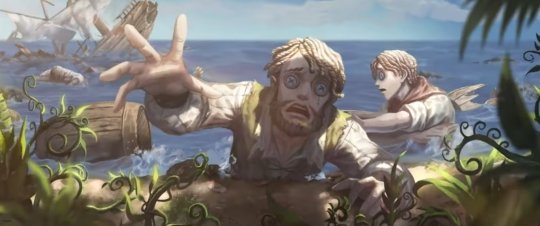

Returning with Trauma
After carrying out their attack, they sail home and show their (stolen) spoils to the Queen. Jose’s father lies about what actually happened, saying they suffered in a bad storm and struggled against pirates but managed to guard the Queen’s “wealth”. This fake story is reported in the newspapers and the Queen rewards him handsomely for his actions, granting them “titles” (like Viscount to Jose) and their own wealth (how they became nouveau riche).
Additionally, according to 1 backstory, it states that, along with receiving the “Queen’s commendation”, they also received “the honor of leading the Royal Navy”, meaning they may have been transferred from the Merchant Navy to the Royal Navy by this point.

Jose’s father is happy to finally achieve his dreams of fame and fortune. The same can not be said for Jose, who is horrified at his father’s actions since the incident when he attacked and stole from innocents that helped them after their experience with the “nightmarish waters” as well as lying about what happened. Jose’s father likely refused to let Jose reveal the truth to anyone, which is likely why he wrote about it (to himself) in his personal diary.
There’s also a good chance he did this in part to try to help deal with his own trauma.
Jose, as I said, was potentially around 10 years old during this incident. This is based on Alice, who is 21 in the present, was reportedly 6 years old at the time of the tragedy. Meaning Jose, who is 25 in the present, would’ve been 10.
Besides basing it off Alice’s age, Jose being young to some degree (even if he’s not exactly 10) would also explain Jose’s trauma, and how he had such bad “panic attacks” and “night terrors” that nothing could cure. To the point the only way he was able to sleep was by drinking to try to help him forget.
Night terrors tend to affect children under the age of 13 more often than others, which Jose would be if he were 10 during deduction 3 & 4.
Panic attacks are more common in older teenagers and young adults, but it can happen due to being affected by a traumatic event. Younger children, like a 10-year-old, can be more easily traumatized as they're still in their developmental period, making them more vulnerable to stress or trauma. Though not all children develop psychological problems, as it depends on the severity and duration of the trauma, as well as their age, support systems, and temperament. They also have more difficulty processing or coping with such events and are more likely to experience physical symptoms in response to trauma.
Jose’s trauma was caused by:
His involvement in an incident that wrecked or damaged their ship enough to put it out of commission for 2 months with a high loss of life.
His involvement in an event where innocents, who likely helped the survivors of the nightmarish water and shipwreck, were attacked, their home looted, and some number killed, including the owners of the manor.
Both events he was involved in were caused by his own father, who lied about what actually happened.
A lack of support (we have no knowledge of his mother, friends, or other support systems, and his father doesn’t truly love him and only sees him as an object that he wants to ensure does his job) or coping systems.
As additional proof, we know both Alice and Orpheus are confirmed to have been deeply affected by the events of the tragedy.
Alice was called the "mad girl of doom" after the tragedy in the news articles from the official artbook, and her official backstory states she suffered "hysteria", while her trailer shows some of what happened in the asylum.
Orpheus during 1 of his trailers said he tried to "escape from reality", as well as suffered shock and delusion. It is also highly likely it is because of this event he develops his Nightmare personality as well as becomes the manor owner and eventually begins the manor games.
Jose’s Blessing
From here, the Baden family’s fame and fortune continue to grow, just like Jose’s father wanted. Unfortunately, Jose’s issues only continue to worsen over time, but Jose’s father doesn’t care and forces his son to continue helping him (the Captain) in his (Jose’s) role as First Officer. The major reason Jose’s father needs Jose is because of his son being “blessed by the god of the sea”, which caused “the winds [to] be silenced” and make the “ocean calm”. Considering the “nightmarish waters” that killed a majority of the crew, Jose likely had to have gotten this blessing right after that incident before they sailed home, or sometime after they finally completed that mission.
There is no information regarding where or how he got it, so the best we can do is guess.
Regarding the watch itself, the symbol on it is a Fouled Anchor:

Foul: a nautical term meaning to entangle or entwine, and more generally that something is wrong or difficult
Fouled anchor: refers to when the anchor has become hooked on some obstruction or has its cable wound around it
It is a condition at sea that is to be avoided, as it may cause the vessel at anchor to "drag" its anchor, thus endangering the vessel. To correct the situation was dangerous and time-consuming, and could usually only be accomplished by the most experienced sailors on the vessel
The fouled anchor has been the official seal of the British Admiralty/Lord High Admiral since 1588 (personal seal of Lord Howard of Effingham, who helped defeat the Spanish Armada).
It is also the emblem of the Chief Petty Officer (US Senior Noncommissioned Officer Rank)
Due to the fact the symbol and watch itself aren’t anything unusual (the watch itself was likely for the watch system aboard the ship, which I explained earlier), I don’t think he received the watch itself, more likely he already had the watch but it was blessed by someone or something else.
One possibility is he got it from Lakeside Village after they shipwrecked or when they landed when their ship was damaged from the nightmarish water. Fiona in her 4th letter does discuss the bottom of the lake and something strange about it, and we already know the villagers at Lakeside worshiped the lake deity aka Hastur, who has a Poseidon skin. Maybe if Jose fell in the lake after their wreck, that could’ve been when he got the blessing? Maybe from Hastur? Or maybe from Grace, or whoever that voice that spoke to her was in her last deduction.
Another idea is he got it some other way while at the village or Oletus Manor, since Dennis and his family did like Greek myths, but who knows.
Getting it while at Lakeside Village or Oletus Manor sometime during, after, or because of their trouble with the nightmarish water feels like it’d make the most sense.
I don’t think he got it as a reward or for any other reason from the Queen. If she did have it, why not give it to someone else sooner, or why not take it back when Jose’s father disappeared, since if she stripped the Badens of everything in her belief his father stole her treasure, she should’ve taken the watch with the blessing too if it did come from her.
I also think he would have to have gotten it fairly soon after the incident and their return, as Jose’s backstory implies a major part of their fame and success came because of that blessing.
(Even though Jose’s 4th letter mentions “The swaying pocket watch is finally back where it started” when he sees the umbrella, I’m not sure the blessing could’ve come from Wu Chang, as it was only recently they had it aboard the ship before his father disappeared, and the blessing is phrased like it’s been around awhile. It’s also possible that there is no blessing and it just has to do with the hypnosis he performs on himself or the “deep hypnosis” done to him, but we don’t know right now. I’m not yet ready to say for certain it’s not real, as Jose’s father is pretty intent on his son doing his job that it seems suspicious. Anyways.)
Drugs and Forgetting
Either way, for now, due to the lack of any information on this subject, it’s impossible to say for certain how exactly he got it. All that matters for now is Jose’s father needs it to continue to ensure his fame and fortune, which is threatened by Jose potentially being unable to sail due to his worsening panic attacks/night terrors.
Jose’s father needs to find a fix for this problem, but not because he cares. He still only sees Jose as an object, and just wants him to continue to do his job to ensure his own success and wealth.
Jose’s deduction 8 references “drugs” and “to forget is the best cure”. This implies Jose’s father may have at least thought about trying if not actually attempted to use drugs on Jose. Though we know from his deduction 6 that doctors “tried a variety of drugs with no obvious effect”. This implies Jose’s father had to have either been trying something abnormal, not one of the usual drugs.
If not drugs, it may at least imply he sought or attempted to utilize a solution that involved making Jose “forget”. As the trauma causing Jose’s night terrors and panic attacks revolved around the incident in deduction 3 and 4, caused by the nightmarish water which potentially led to Jose’s father participating on the attack on Oletus Manor, Jose’s father may have needed to cure Jose by making him forget that entire incident.
In terms of not the usual types of drugs, we know the manor owner has several, including Dionysus and Hydra which revolve around changing a person’s memory (either to forget or to rebuild it).

Though if Jose’s father did help cause the incident that resulted in the death of Alice’s parents, I’m unsure if the manor owner would want to help. Not to mention it seems like few are actually aware of the drugs he’s created, so I’m unsure if Jose’s father would’ve been able to hear about them himself. Though if he did, it’s possible he might’ve wanted to try to use his drugs on Jose. On the other hand, we do know Jose’s father to some degree was working with Sam Bourbon based on Jose’s 2nd letter, which states he carried cargo which belonged to Sam.
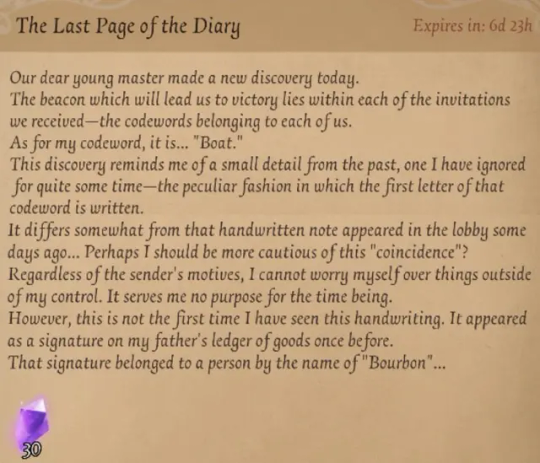
I say Sam as he was the 1 to create Dovlin, which is confirmed by both Demi’s release backstory as well as Demi’s 3rd letter. Dovlin we know was very popular based on her backstory, so much so that when Sam disappeared and Demi had to take care of the bar, business was bad because all the customers wanted was dovlin, and Demi didn’t have or know the recipe. Only Sam did.

From parallels with the summer event with Sea Salt Mocktail as well as Demi’s 3rd letter, we know dovlin uses the same “raw materials” the manor owner uses with his own drugs, except its effects (dovlin presumably) compared to the owner’s own drugs were “completely different (opposites even)”, and that a “strong drug resistance [is] created by any interactions between them”. He even essentially described dovlin as a drug when he said “the final effects of the drugs were completely different”.

The summer event and Demi’s backstory and deductions also tell us dovlin can be addictive if you drink too much of it (but that���s alcohol in general). Kevin’s description of the key ingredient for sea salt mocktail includes how it “greatly enhance[s] the flavor of food”.
From Demi’s 2nd letter, it implies the initial effects of dovlin caused the mice to “all [die] in fear with no exception”. In-game, health is called “fear”, so dying of fear would be like a survivor being downed or eliminated. Also, from in-game we know the description for dovlin states that it “reduce[s]” fear aka it heals damage a survivor has taken. Helping eliminate “fear” could be the sort of thing that might help Jose with his panic attacks/night terrors and inability to sleep, and thus help him to be more fit to sail.
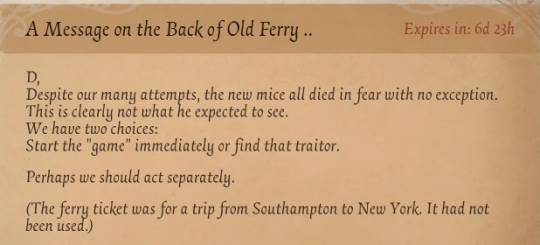
Although, I haven’t seen anything explicit that says dovlin helps you to “forget” (besides the false myth that alcohol can make a person forget), though maybe that’s how it “reduces” fear, by making the drinker forget their problems.
The only other issue I can think of is how Sam didn’t perfect his dovlin recipe until later, meaning I don’t think it could exactly “heal” yet, though it may still make the person “forget”. So, there’s a chance he wasn’t given dovlin yet. Or maybe Sam told him it wasn’t complete yet but had Jose’s father help him, potentially by retrieving the material he needed based on Demi’s 1st letter as well as Jose’s 2nd letter.
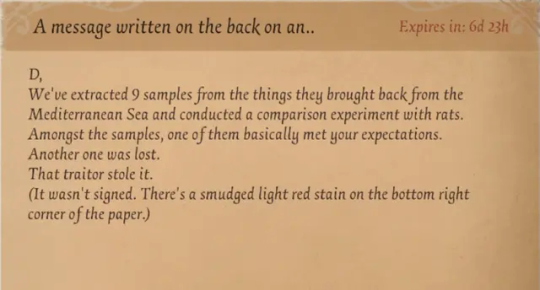
The last option is Vilhelm Lamb from Wu Chang’s 4th letter, who may be the “medical professor” that adopted Alice aka “Eury Lamb” to be an “experimental subject” and subject her to “prolonged medication and physical therapy”. As we know Jose’s father, Joaquin, was working with Vilhelm, that means Joaquin knew Vilhelm and could’ve asked him for something to fix Jose. If he is performing experiments, and is even using “medication”, it’s possible he also had “drugs” that could make Jose forget (or in some other way allow Jose to do his job). It’s even possible Joaquin was doing the job he was for Vilhelm as (basically) payment in return for the drugs for Jose.
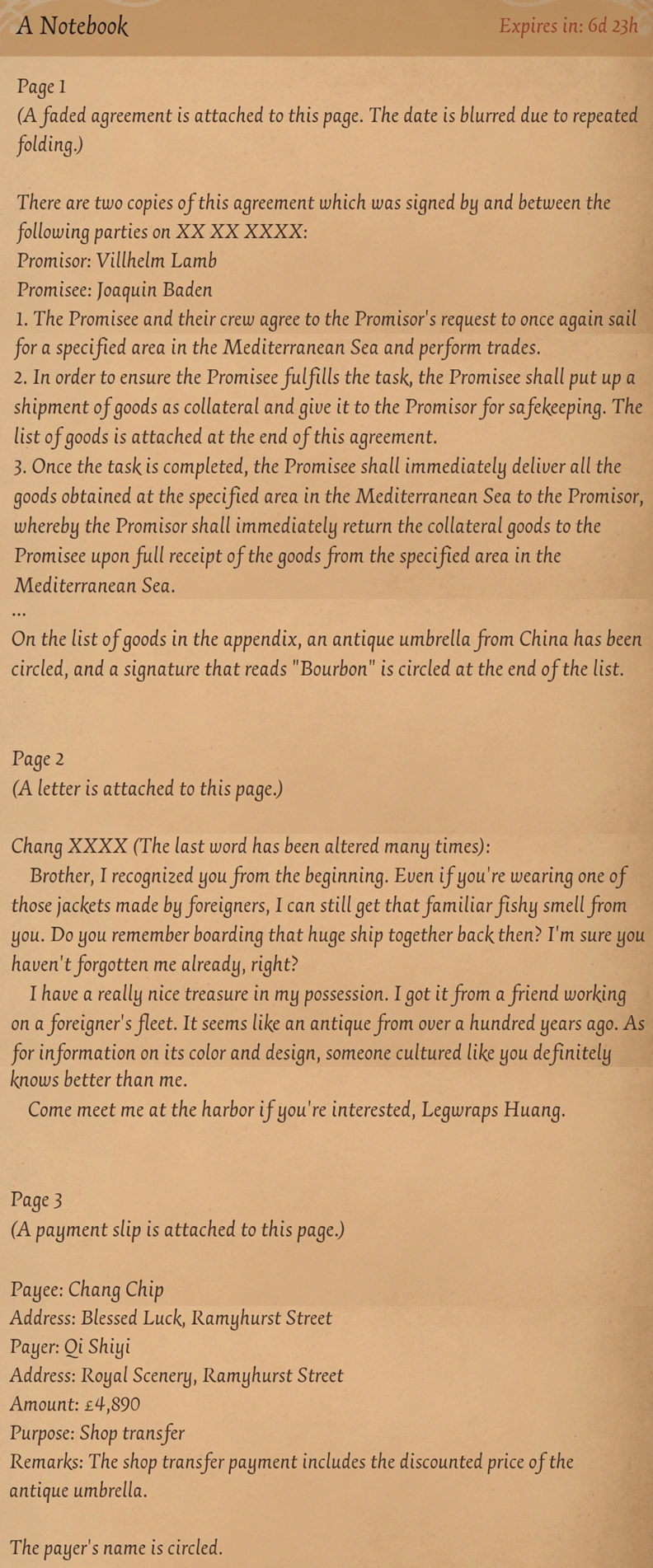
Route Amendments
It is unknown whether or not he did actually give something or do something to Jose, especially as Jose’s deduction 8 (when translated) mentions the letter Jose’s father wrote to whoever he was asking to help fix Jose is described as being “torn to shreds”. The fact it’s “torn” may imply Jose happened to see the letter his father wrote, though it’s also possible his father or recipient tore it up to keep it secret, but I’m not sure I see Jose’s father being the type to do that (or really care much if Jose or someone else saw it). I could be wrong though.
Considering Jose in his 4th letter mentions “drugs” (that cause hallucinations) it makes me wonder if this could be evidence that his dad did in fact use something on him, but also that Jose found and was aware (at least eventually) of what his dad was doing.
If Jose did see the letter his father wrote, it could relate to why his next deduction (9) mentions Jose having made a “large number of corrections” to “the route”. This sounds like a specific route, a single one rather than many. If we’re talking about a particular route Jose made changes to it in response to learning his father wants him to “forget” (about the incident), the route he amended may be the alternate route Jose’s father took in response to being caught in a storm. The route that led them to the “nightmarish waters”, causing the loss of most of the crew and cargo, as well as damaged or sank their ship.
If Jose thought he might forget, it’s possible he made corrections to the “dangerous” route to better outline why it is dangerous, based on their experience when his father took that route to avoid a storm in an attempt to avoid being delayed. This might’ve been to dissuade anyone using that chart (like his father, though he doesn’t seem the type to let this sort of thing change his mind) from using that route. It’s also possible he made these changes to help remind himself (if he did forget) about that route being dangerous.
Maybe he did this help himself avoid going on a voyage if they did use that route. Maybe that’s why he didn’t board the ship on certain voyages.
Jose as a sailor in the navy isn’t a coward, and he didn’t seem to avoid every voyage, as based on his backstory he did serve well to honor the Baden family name, as well as help his father earn fame and fortune. Yet we know at least close to when his father disappeared as well as the day he did disappear, he was being reprimanded for failing to board several times. I think the reason he fails to board those times, and thus why he drinks, is because of his panic attacks and trauma, as drinking is said to be the only way to allow him to sleep (he doesn’t drink only because he enjoys it).
It’s possible on those days he happened to have a panic attack or nightmare. It’s even possible he might’ve had either even if he was made to forget, as some part of him might’ve still remembered, and that was why he was drinking and failed to board the day his father disappeared (based on implications from Departure Date’s design notes). Or maybe his trauma was triggered if the voyage they were going to take that day involved the “dangerous” route or their destination being Oletus Manor (if Jose’s father made deliveries there to Sam while he was working on dovlin, or even deliveries to the manor in general as both Sam and the manor owner’s drugs used the same raw material, aka the ferns), which are places tied to his trauma.


It's possible that Jose was made to forget, as he doesn’t seem to reference or hint towards the nightmarish water incident later despite being at the manor. Maybe the reason he was potentially partying and drinking fairly care-free the day his father went missing based on Departure Date, who doesn’t seem obviously suffering from trauma, was because his father succeeded in making Jose forget how to be a “good man” as implied by his father in Jose’s deduction 8.
“Deep Hypnosis”
Maybe he forgot because of drugs. Or maybe it was because of the “deep hypnosis” hinted at by the manor owner in Jose’s 3rd letter (which also describes Jose as a “gift” from an “old friend” that passed away, which helps to provide a bit more evidence to the idea Jose and his father knew the manor owner aka Orpheus in some way).

We have no information who did it. Not even the manor owner seems to know. The only thing we do know is whoever did it buried a “spiritual anchor” for him that he could use to avoid a mental breakdown. The only 3 specific options I can think of so far for who did it are:
Jose himself, as his ability in game is hypnosis and we know he performs “self-hypnosis”.
Jose’s father, who’d have access to Jose’s watch to some degree, as Jose’s watch is the thing Jose uses in-game to perform hypnosis.
A bit of a crack theory, but the 3rd idea is Ada, who we know is the 1 person in the story said to “devote herself to hypnotherapy research, using hypnotic suggestions to eliminate the pain, fear, and other negative emotions plaguing her patients”.
Jose, I think, is unlikely as I don’t think you can perform “deep” hypnosis on yourself.
Jose’s father I’m doubtful of as “deep hypnosis” should likely require someone experienced and skilled.
The above reasons are essentially why Ada feels the most likely, even though we have not seen her related to Jose’s backstory at all yet. I do think it’s possible he could’ve been sent to the asylum (and maybe the church’s doctors are the ones who tested various drugs on him in deduction 6).
Back then, people didn’t understand mental health. Those who exhibited PTSD or other mental health problems didn’t receive the help they needed because they didn’t recognize or understand the issues.
By the end of the 18th century and during the 19th century, there was an increase in the number of sailors being admitted to London’s asylums due to mental breakdowns, especially after major battles.
The men suffered from severe anxiety, depression, and trauma. But back then, people only recognized the symptoms, such as partial paralysis, sleep disturbances, dysesthesia, delusions, and so on.
It also took a long time to recognize malnutrition, trauma through violence, and mistreatment.
Doctors noticed sailors in their everyday lives were "restless, had severe insomnia and delusions, and their moods quickly went from happy to sad". These were actually cases of bipolar disturbances, but doctors treated it like a fever, so many sailors ended up hurting or even killing themselves. The doctors just didn't know how to deal with these men.
Depression was dismissed as melancholic mood, which was treated with sea air, sunbathing, and walks.
Schizophrenia was treated liked malaria.
Many hoped for help in the asylums. Around the start of the 19th century, maybe 25% recovered, while another 25% died due to the treatment, and a good number simply disappeared. More serious cases were sent to Bethlem Hospital, 1 of the most notorious/infamous asylums.
The men here were seen as incurable. Conditions in the asylum were inhuman. Basic equipment (tables, chairs, beds, plates, cutlery) were forbidden. Sanitation was non-existent. They had a minimal diet, no medicine or fresh air, and were left to fend for themselves.
Mental issues had a stigma attached and those seen as having those issues were called insane. As a result, many attempted to hide their problems, otherwise they'd face social trouble or weren't taken seriously.
Sailors were seen as masculine and tough, which led society believing them incapable of having such illnesses, yet depression was indeed a major issue in the Navy.
Pressure from their higher-ups and a high demand for results in a short time worsened things.
Even officers were affected, due to the strain of responsibility.
The Navy Board considered men who were unable to perform their duties as having no place in the Navy and doctors were of the opinion that mental health issues made people "unfit for service".
While Jose’s at the asylum, he could’ve met Ada, who may have had the chance to perform hypnotherapy on him, which feels like it’d be very fitting for him. In her 4th deduction, it’s even said she studied and researched “psychology”, which again would fit with Jose’s issues. Emil in Ada’s 9th deduction is even said to suffer “recurring night terrors”, while 1 of his backstories mentions him having PTSD, which are the same sort of issues Jose is suffering from according to translations of Jose’s 5th deduction.
The Disappearance
Whatever the case, we know Jose fails to board his father’s ship 1 day while likely drinking in Liverpool, potentially due to a panic attack or nightmare or some other issue (or because he forgot), with Liverpool potentially being where they usually depart from (and thus could be where they may live close to).
From Jose’s 1st letter, we know the mission was supposedly to go to some spot in the northeastern corner of the Mediterranean.
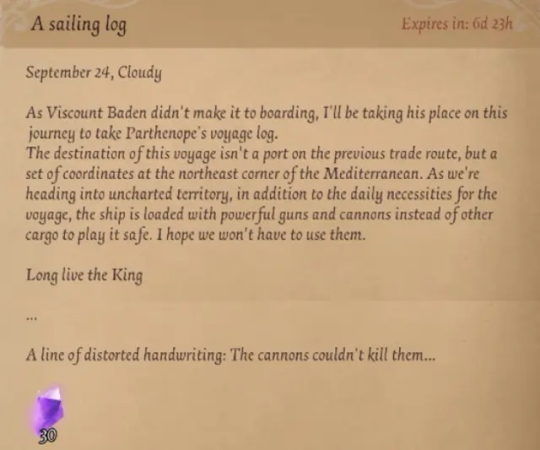
We know they brought mostly weapons like cannons instead of cargo out of caution due to the area being somewhere they apparently hadn’t been to before. The 1 non-weapon we knew they had was Wu Chang’s umbrella.
As the Queen thought they had stolen her treasure afterwards, as well as how they were said to “serve as the [Queen’s] royal escort”, meaning they might be protecting royals or their treasures, combined with how Jose’s backstory states they performed tasks such as “shielding English ships, or transporting royal treasures”, the latter may have been why they had the umbrella that day. In general, guarding her treasures may have been the “special mission” she assigned to them back in deduction 5. The antique umbrella may have been 1 of her treasures.
From Wu Chang’s 4th letter, we’ve learned that Joaquin, Jose’s father, was in the Mediterranean Sea to “perform trades” on behalf of Villhelm Lamb, with some of their cargo, including the umbrella, as collateral.
This connects back to Jose’s 2nd letter, as we hear about the “Bourbon” signature, and back in Jose’s 2nd letter, he said he saw the signature “Bourbon” on his father’s “list of goods” once. With what we now know about Villhelm, considering Jose says he’s only seen that signature “once” that implies Joaquin and Sam likely only worked together on this one mission (rather than them having a long term partnership).
The collateral (including the umbrella) would be returned once Joaquin gave Villhelm the “receipt of the goods from the specified area in the Mediterranean Sea”. We know from Jose’s 1st letter that Joaquin and his crew, aboard their ship which is called the Parthenope, never returned from this mission, which is why we see the umbrella exchanging hands in the latter part of Wu Chang’s 4th letter. It ends up with Qi Shiyi, who likely brought it with her when she went to the manor for her game. Jose goes to the manor himself when he learns that the umbrella is there.
Based on Jose’s 1st letter, as it says “the cannons couldn’t kill them”, it seems the crew somehow ended up hallucinating, which ends up being what caused their deaths (they likely sank, maybe by shooting their cannons at their own ship).
Considering we know Sam had some involvement with this voyage based on his signature, I do wonder if it’s possible he’s the reason the crew hallucinated. I’ve already discussed Sam and dovlin, as well as Demi’s 2nd letter, which states “the new mice all died in fear with no exception”. The crew based on Jose’s 1st letter were definitely “afraid”, and in terms of Sam’s experiment, they could be seen as “mice” aka lab rats. Since we know everyone died and the Parthenope likely sank, everything would match with what’s said. Joaquin and the crew of the Parthenope may have been experimental subjects for Sam’s dovlin and/or the manor owner’s drugs.
Shipwreck
If the Parthenope sank in the Mediterranean, that could mean that the shipwreck at Lakeside came from the Baden’s incident during Jose’s deduction 3 and 4, after the “nightmarish waters”, and why they ended up at Lakeside and the manor, which leads to them potentially getting involved in the tragedy where the DeRoss couple died.
Notable items on the ship include:
Map of the Mediterranean
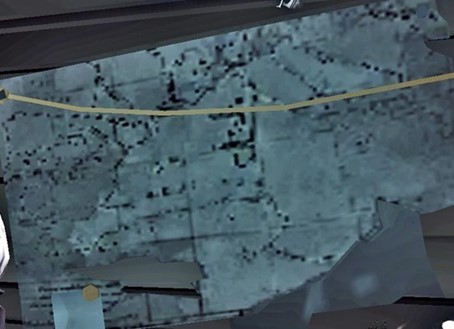
Chinese symbols matching the ones on Xie’s (White’s) compass
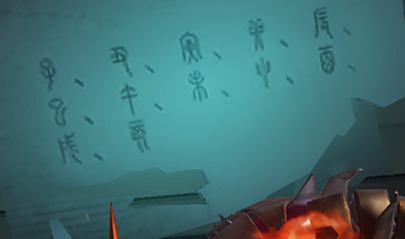
The Teru Teru Bozu doll (used to pray for fine weather)
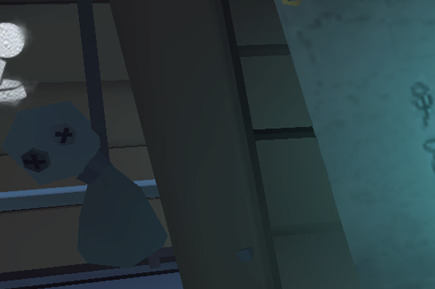
Picture from Jules Verne’s Twenty Thousand Leagues Under the Sea depicting a sailor being grabbed by a giant squid

The Nighttime picture which seems reminiscent of Wu Chang’s trailer when Fan dies

The Jolly Roger/Cthulhu flag

“SAVE” (written in blood?)
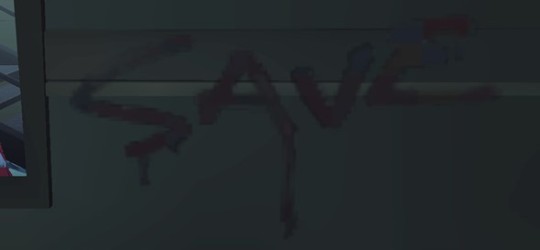
The other reason being how we know Wu Chang’s umbrella ended up at Oletus Manor.
Various letters, including Hastur’s 2nd letter (which is before the Lakeside villagers disappeared) and Fiona’s 3rd letter, both describe it as a “shipwreck”. We also know the route Jose’s father took was described as “dangerous” and having “nightmarish waters”, and so entirely capable of causing a shipwreck.
Going to Oletus Manor
Jose waits from sunset to moonrise (as indicated by the titles of Jose’s 1st and last deductions, as well as from his backstory) for his father’s return, but he never appears.
The time between Sunset and Moonrise is usually between 30-90 minutes.
Due to the ship’s disappearance, the Queen believes they stole her treasure, leading her to punish the Baden family by taking their family’s wealth and titles.

Sometime after this, Jose hears that the umbrella turned up at Oletus Manor, and so he goes there to either find his father (despite how Jose’s father didn’t love Jose and how he treated his own son, Jose still attempts to look for him) or “retrieve our honor”.

Miscellaneous
Scurvy

Scurvy is caused by not having enough vitamin C (something the human body doesn’t produce naturally), which orange juice is rich in.
Back then, before refrigeration, sailors needed to ensure they had enough food on board to survive the journey. This meant mostly only salted or nonperishable food, like ship’s biscuits, salted beef, pork, cheese, and fish. Thus, without regular access to things like vegetables or fruit, sailors developed scurvy.
Scurvy killed more than 2 million sailors between the time of Columbus’ voyage and the rise of steam engines in the mid-19th century. The problem was so common that shipowners and governments assumed a 50% death rate from scurvy for their sailors on any major voyage.
The 1st symptoms of scurvy developed at least 3 months after having extremely low vitamin C levels.
The earliest symptom is lethargy, which was so intense people once believed laziness was a cause of the disease.
It was debilitating. Your body feels weak. Your joints ache. Your arms and legs swell, and your skin bruises at the slightest touch.
As the disease progressed, your gums become spongy, and your breath fetid, your teeth loosen, and internal hemorrhaging makes splotches on your skin. Old wounds open; mucous membranes bleed. Left untreated, you will die, likely from a sudden hemorrhage near your heart or brain.
Scurvy is treated by adding vitamin C to your diet. Most people treated for scurvy feel better within 48 hours and make a full recovery within 2 weeks.
Scurvy was brought to the public's attention due to commodore George Anson's journey around the world. He set sail with 6 ships for the Pacific in 1740 with 2,000 able seamen. When he returned to England with less than 700, the rest were found to have died due to the disease.
Anson's chaplain described their deaths this way: "those affected have skin as black as ink, ulcers, difficult respiration, rictus of the limbs, teeth falling out and perhaps most revolting of all, a strange plethora of gum tissue sprouting out of the mouth, which immediately rotted and lent the victim’s breath an abominable odor".
The Royal Navy discovered a solution to the disease in the 18th century thanks to surgeon James Lind. His experiment on board a naval ship in 1747 showed that oranges and lemons could be a cure for scurvy.
Explorer Sir Richard Hawkins in 1622 was the 1st to suggest citrus as a cure.
Dutch writer Johann Backstorm was the 1st to establish the true cause of scurvy
Captain James Cook circumnavigated the world from 1768 - 1771 on board his ship the HM Bark Endeavor, during which time no life was lost to scurvy.
Cook claimed it was because of the malt and wort he brought on board to test as a cure, but malt doesn't have vitamin C. His cleanliness and strict orders not to drink fat from the chef’s pans (that when came in contact with copper, irritated the bowels and made it hard to absorb vitamins) were actually more helpful.
Besides malt and wort, 1 other thing Cook had, found on the log of provisions put aboard, was 7,860 pounds of sauerkraut. Sauerkraut, which is made by fermenting thinly sliced cabbage in its own natural juices, is rich in vitamin C, though that fact was unknown at the time.
It wasn’t until 42 years after Lind’s experiment that the Admiralty first issued an order for lemon juice to sailors
Before Lind, some potential cures included:
"elixir of vitriol" (a dilute solution of sulphuric acid)
blood letting
applying a piece of turf to the patient's mouth to counter the "bad qualities of sea-air"
soup block (bones and scraps of meat from carcasses, boiled down then dried)
Cider
Sea-water
vinegar
1 cure besides citrus that did work involved sailors who ate the ship’s rats (as they synthesized their own vitamin C)
Superstitions:
Believed redheads were bad luck. If a sailor met a redhead before boarding, the sailor had to speak to the redhead before they spoke to him to mitigate the bad luck of encountering a redhead before setting sail.
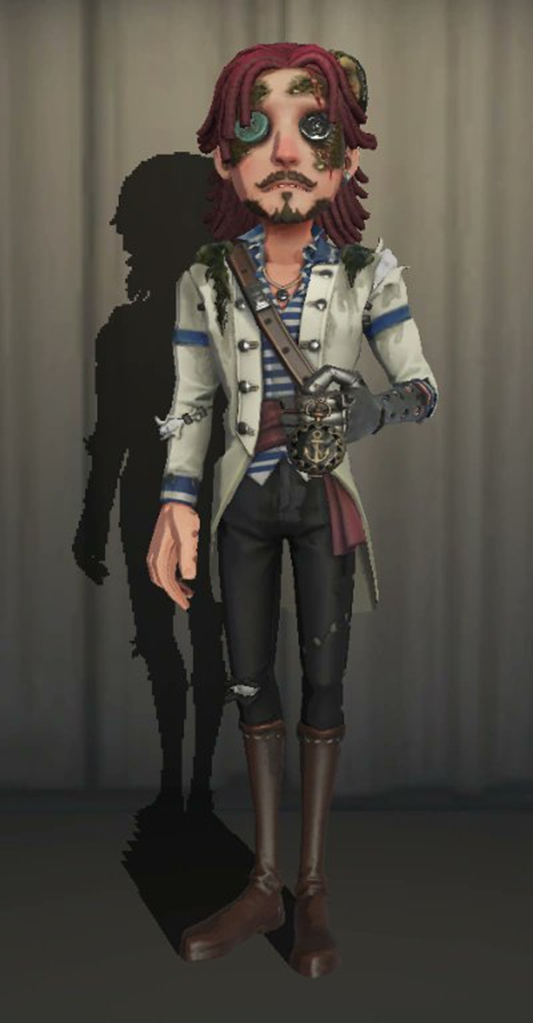
Believed manta rays (aka devilfish or sea devils) could attach themselves to a ship's anchor and drag them under the waves to Davy Jones' Locker.
Tattoos and piercing are said to ward off evil spirits, while gold hoop earrings are said to bring good luck.
Had a fatalistic view of drowning. If someone fell overboard, they might not even be thrown a rope because it was believed their death was preordained. “What the sea wants, the sea will have”. Besides, a sacrifice to the sea gods might placate them so no more of the crew would follow.
Umbrellas were for foul weather use, and bringing one on board was thought to tempt fate.
Believed that earrings improved eyesight.
Wore gold earrings so they wouldn’t go broke. Even if they spent all their money drinking, the sailor could buy their way out of trouble. And if he died in a foreign port, there’d be enough money to take care of funeral expenses.
Similar superstition that gold coins placed on the eyes of a corpse were used to pay Charon for the voyage across the River Styx.
Why Sailors Wore Earrings
It was a mark of their voyages.
Earrings were given to young sailors to commemorate their 1st crossing of the equator or when they rounded the treacherous waters of Cape Horn (Southern tip of South America).
Believed pierced ears would prevent sea sickness.
Believed gold earrings would protect a sailor from drowning.
Silver or gold earrings were worth enough to pay for a sailor’s funeral.
Some engraved the names of their home ports inside their earrings so their body could be sent to their families for a proper burial.
If a man died on a ship, the earrings helped cover the cost of transporting his body home so it wouldn’t be buried at sea or on foreign soil.
Some sailors dangled wax from hoop earrings, which they used as earplugs when firing the ships’ cannons to help protect against hearing loss.
#idv#identity v#jose baden#first officer#idv jose#identity v jose#idv first officer#identity v first officer#Happy Birthday Jose!!!#sirenjose analyses and theories
15 notes
·
View notes
Video
Steam Special por jpm uk-image Por Flickr: SR Merchant Navy Class 4-6-2 No 35018 'British India Lines' March 2019
3 notes
·
View notes
Text
The Princess Royal visits New Zealand

Day One
The Princess Royal arrived at Government House in Wellington and was welcomed by the Governor General of New Zealand, Her Excellency the Rt. Hon. Dame Cindy Kiro.
Day Two
Her Royal Highness started the day by meeting the Prime Minister of New Zealand, Christopher Hipkins.
The Princess Royal subsequently visited the National Crisis Management Centre at the Executive Wing in Wellington to meet those involved in the response to Cyclone Gabrielle.

“You should all be proud of the resilience, strength and care for your communities you are showing in the face of adversity.
Kia Kaha”
Her Royal Highness also visited the Museum of New Zealand.

As Colonel-in-Chief of the Royal New Zealand Corps of Signals, Her Royal Highness attended a reception to mark the centenary of the Corps.

The day finished at the National War Memorial in Wellington, where The Princess attended a Service of Remembrance and laid a Wreath on the Tomb of the Unknown Warrior.
Day Three
Her Royal Highness visited the New Zealand Riding for the Disabled group in Porirua, and handed out rosettes to young riders and long-serving volunteers. The Princess joined Riding for the Disabled (RDA) as its Patron in 1971, later becoming President in 1985.
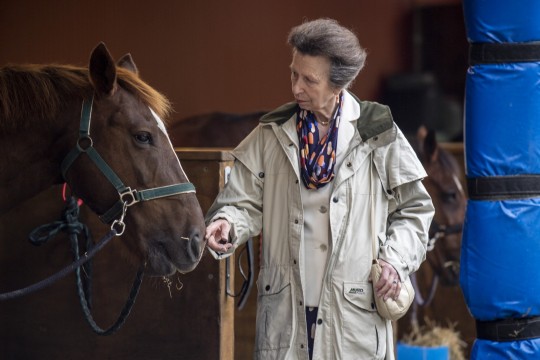
Next, Her Royal Highness opened the Mission to Seafarers new Wellington Mission, and later unveiled the foundation stone for the Mission to Seafarers and Merchant Navy Memorial at Wellington Cathedral.
The Princess is President of the charity, which provides support for the practical and spiritual welfare of seafarers of all nationalities and faiths.

Day Four
The Princess Royal started her fourth day in New Zealand at Tūranga Library in Christchurch, to hear about the rebuilding of Christchurch Central City and Christ Church Cathedral. Her Royal Highness also visited the site of Christ Church Cathedral in Cathedral Square.

Later, The Princess Royal attended the Rededication Service for the Citizens' War Memorial and laid a wreath in Cathedral Square.
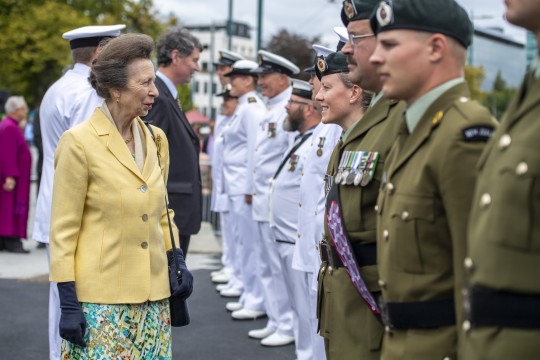
As President of the Royal Agricultural Society of the Commonwealth, Her Royal Highness met representatives of the Royal Agricultural Society of New Zealand and Canterbury Agricultural and Pastoral Association at Canterbury Agricultural Park.

The Princess Royal later visited Untouched World Merino and Natural Fibre Workrooms.
Afterwards, Her Royal Highness visited Willowbank Wildlife Reserve. The Princess Royal is Patron of the New Zealand Conservation Trust.

© Royal UK
36 notes
·
View notes
Text
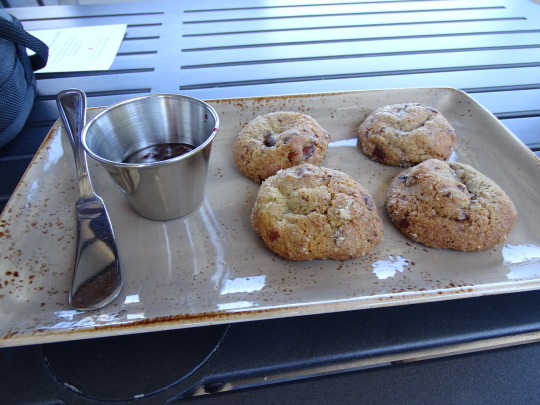

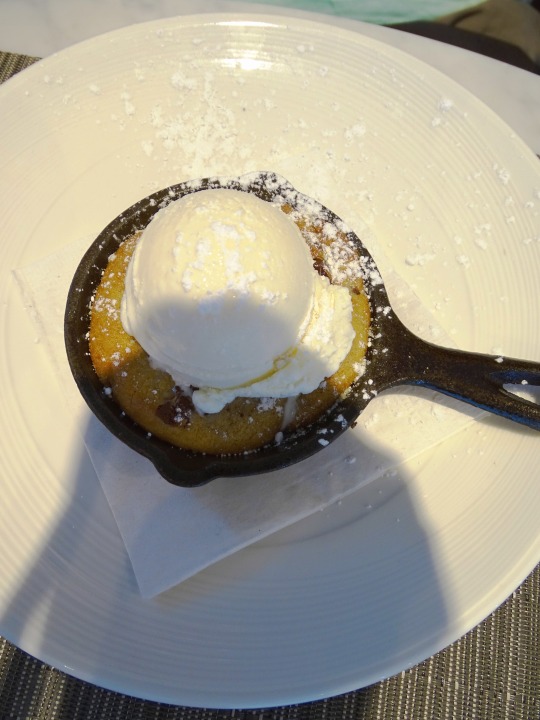

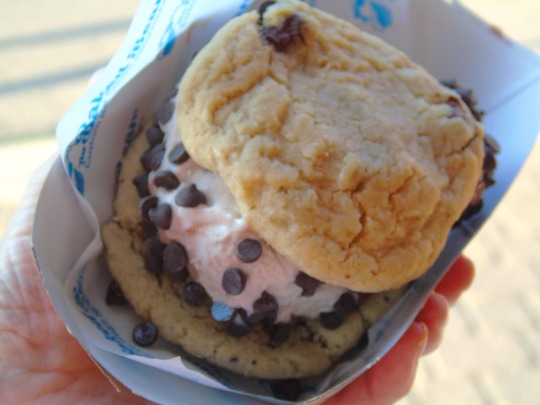

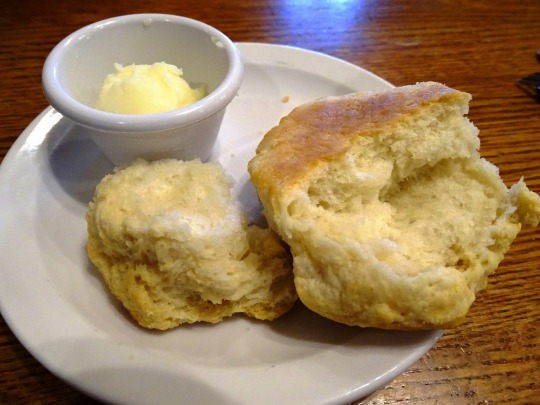
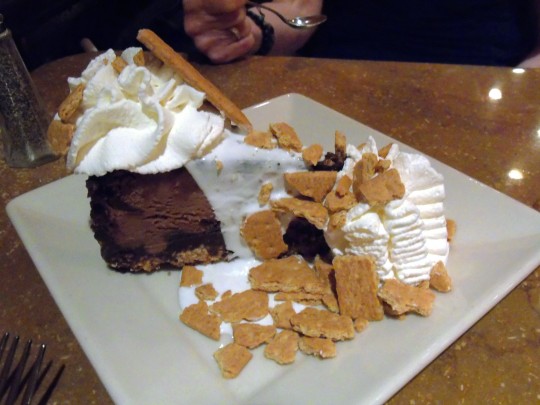


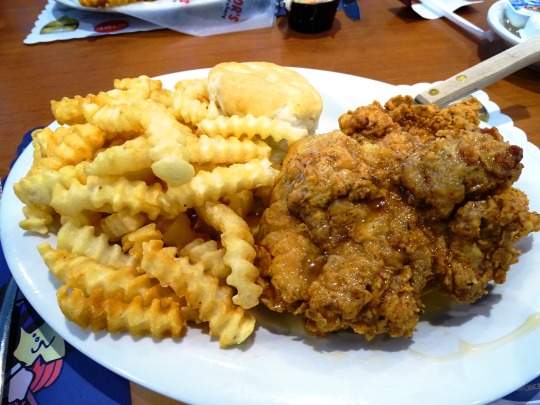


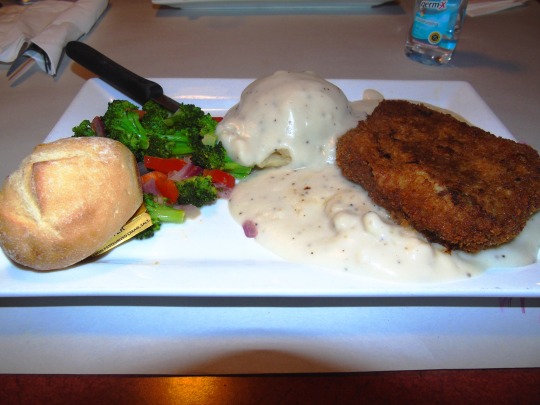


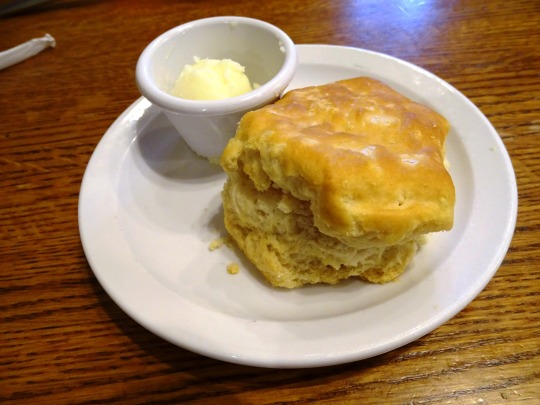

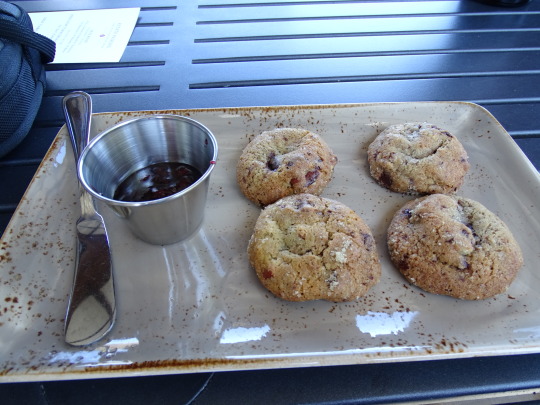
National Biscuit Day
In the US, they’re flaky bread rolls. In the UK, they’re sweet, crispy treats known as cookies in the US. Bake your own, and try different varieties and flavors.
Calling all smart cookies! National Biscuit Day offers the perfect chance to go crackers about one of the world’s most popular snacks. But did you realize just how many types of biscuits there are?
American biscuits are small crusty bread rolls, often served at breakfast or as a side dish. However, in the UK, the word “biscuit” is used for flat sweet treats, which are known as “cookies” in the US. One of the most unusual traditional British varieties is the Garibaldi. Also known as the “squashed fly biscuit,” it contains currants in between two layers of dough.
History Of National Biscuit Day
Many of you will be surprised to find out that biscuits aren’t a modern invention. Instead, they were born of necessity in the ancient world. Merchants and military personnel in the Roman, Greek, and Egyptian empires would often spend many weeks at sea, ferrying cargo and making their way to foreign shores. Hence, they needed a snack that would provide them with a source of calories for the entirety of the journey. Fresh food was out of the question. It just wouldn’t keep. So captains turned to stocking their larders with dried foods that wouldn’t go off.
Preservation techniques were already fairly advanced in ancient times. People knew that if you dried something out, it would last longer and wouldn’t go off. Millers, therefore, began grinding up flours and then baking cooked bread on a low heat for an extended period. This technique helps to retain the nutrition, but removes the water content, preventing any microbes from thriving.
From that point, dried biscuit-like breads became a staple at sea. The ancient Egyptians, for instance, cooked up flat brittle loaves made of an old grain called millet. Later, the Romans created the first example of what we would recognizably call a biscuit. They spread wheat flour paste over a plate and then left it to dry and harden.
Biscuits also played a prominent role in the early history of medicine. Many physicians believed that problems with the body emerged in the bowel. An “imbalance” in the gut led to patients developing all sorts of nasty symptoms, including many health problems we would recognize today. Doctors, however, saw biscuits as a health aid – very different from the view of medics today – and prescribed them daily for people with digestive issues.
Interestingly, this approach probably would have worked. Cooks made ancient biscuits of whole grains and without sugar. They were a plain, high-fiber food, ideal for settling stomachs.
Eating biscuits at sea remained popular in the middle ages. In the sixteenth century, the Royal Navy provided its sailors with a daily allowance of a pound of cookies and a gallon of beer (yes, you did read that right!) to help them fight off the Spanish armada.
The modern conception (or should we say “confection”) of biscuits as sweet treats didn’t begin until the seventh century. The ancients saw them strictly as a travel food – something you’d take with you for long journeys that wouldn’t spoil. But the Persians began to experiment. Instead of just making the flour into a paste with water, they began incorporating other ingredients like eggs, butter, and cream to improve the texture. They noticed that when you added these items to the mix, you wind up with fluffier, more luxurious delicacies. After a while, they introduced sweet things, like fruit and honey, creating the first cookies in history.
Biscuits arrived in Europe around the end of the tenth century. Legend has it that an Armenian monk traveled from central Asia to France and passed on a recipe he had learned in the Caucuses. The main flavor at the time was ginger.
Even so, these biscuits were still not the modern confections that we enjoy today. They were fluffy and tastier than their ancient forebears, but the mass production of sugar was still absent. For most of the middle ages, biscuits were a side-show – and exotic delicacy that people in some parts of the world enjoyed on occasion as part of their traditional cuisine.
Once sugar production ratcheted up in the eighteenth century, however, the game changed. Suddenly, flour-millers and bread makers could add sweetness to their mixes and create entirely new classes of products, all at a low cost.
By the 19th century, per capita sugar consumption rocketed, and biscuit firms like McVitie’s, Crawfords, and Carr’s all set up factories to mass-produce confections.
The history of biscuits, however, bifurcated between the new and Old World. In the New World, the term came to mean a soft, leavened quickbread. In the Old World, it referred to an unleavened, hard, and flat, flour-based product.
National Biscuit Day is a celebration of biscuits of all forms – not just cookies, but also oatcakes, crackers, water biscuits, and crispbreads. While most biscuits for sale are sweet, savory varieties still make up a considerable chunk of overall sales.
How to celebrate National Biscuit Day
As you might imagine, celebrating National Biscuit Day is a lot of fun. It is your yearly excuse to eat as many biscuits as you like – and to do a spot of baking.
Baking an ancient Roman biscuit called a buccellum is perhaps the most exciting way to experience the day. While the final product won’t be as delectable as manufactured biscuits, it will give you an insight into the sort of cuisine that people enjoyed in the past while sailing.
Failing that, nothing is stopping you from baking cookies or traditional biscuit bread. What’s more, you could trial unique, healthy versions using authentic ingredients. There are plenty of recipes that still use wholemeal flours and sugar alternatives on the internet.
Biscuits are an experience that you’ll want to share. Many people, therefore, invite family and friends over for an afternoon of cookies and tea enjoyed in the traditional style. You just take your favorite type of tea (Assam, Darjeeling, and so on), add a spot of milk, some sugar, and then pair with your favorite biscuits – sweet or savory! Many people like to dunk their biscuits in their tea.
Traditionally biscuits came in particular sizes and shapes. Still, there’s no need to stick with the official format if you don’t want to. Cookies don’t have to be round. If you’ve got some shape cutters at home, put them to good use. You can make cookies in the shape of donkeys, cars, stars, hearts, triangles – whatever you have to hand. And for extra fun, you can cover them in icing sugar.
There are few crumbs of information about just how National Biscuit Day started, but that’s no reason to miss out on the celebrations. So bake up a treat for friends and family, or settle down with a cup of tea or coffee and enjoy one of your favorite varieties. Don’t forget to share your creations with your friends on social media. You never know what other biscuit fanatics are lurking out there.
Source
#S'More Ice Cream Sandwich#Toasted Marshmallow S'mores Galore#OREO Dream Extreme Cheesecake#Oreo Explosion#travel#original photography#vacation#tourist attraction#food#dessert#restaurant#Canada#cookie skillet#Trio of Sorbet#St. Francis Winery & Vineyards#fried chicken#Maple Glazed Fried Chicken#National Biscuit Day#29 May#NationalBiscuitDay#USA#summer vacation#shortbread#Chicken Fried#Häagen-Dazs Coconut Ice Cream Sandwich
2 notes
·
View notes
Text
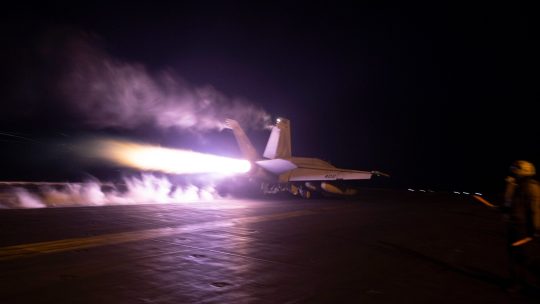
US and UK trigger new wave of attacks against Houthi targets in Yemen
Fernando Valduga
The USS Dwight D. Eisenhower (CVN 69) conducts flight operations in response to the increased evil behavior of the Iranian-backed Houthi in the Red Sea, January 22, 2024. (Photo: U.S. Navy / Mass Communication Specialist 3rd Class Kaitlin Watt)
The U.S. and the United Kingdom launched a new wave of attacks on Houthi targets in Yemen on January 22, hitting radars, missile support systems and underground weapons storage areas, the Pentagon said. The attacks were in response to the Houthi attacks on American commercial ships in the Red Sea.
The two countries operated with the support of Australia, Bahrain, Canada and the Netherlands and launched attacks “to disrupt and degrade the capabilities that the Houthis use to threaten global trade and the lives of innocent sailors,” according to a Pentagon press release. Specifically, the attacks were a response to Houthi attacks on commercial ships using "anti-ship ballistic missiles and attacks from unmanned air systems that hit two U.S.-owned merchant ships".

The attack was carried out with Tomahawk missiles launched on ships and submarines and combat planes, but the Pentagon did not characterize the number of weapons used. The operation targeted eight locations that include “a Houthi underground storage site and sites associated with the Houthi missile capabilities and air surveillance,” the Pentagon said.

The United Kingdom Ministry of Defense said that the attacks were calculated to minimize the risk to civilians and launched at night for the same purpose.

The US-UK operation marks the latest in a series of attacks that began on January 12, when the two countries hit more than 60 Houthi targets in about 30 locations around Yemen.

The Houthi say they are attacking the ships to show solidarity with Hamas fighting Israel in Gaza. They say that the ships hit or head to Israel with supplies or are operated by countries that support Israel in the Gaza war, launched after the Hamas terrorist attack on Israel on October 7. Houthi anti-ship and ballistic missile systems appear to be supplied by Iran.
The U.S. has responded to these more than 30 attacks since November with attacks against the launch sites and against the Houthi missile and surveillance capabilities, the Pentagon said.

The purpose of the retaliations "continues to decrease tensions and restore stability in the Red Sea," the Pentagon said. "But let us reiterate our warning to the Houthi leadership: we will not hesitate to defend lives and the free flow of trade on one of the most critical waterways in the world in the face of continuous threats."
The U.S. stated that the attacks in Yemen are being conducted as part of “a coalition of countries with similar ideas, committed to defending rules-based order,” protecting freedom of navigation and international trade.
The U.S. hit targets in Yemen last week with F/A-18 Super Hornets fighters launched from aircraft carriers. The Pentagon said that these attacks were largely aimed at loaded missile launchers ready to fire.
Tags: Military AviationRAF - Royal Air Force/Royal Air ForceUSN - United States Navy/U.S. NavyWar Zones - Middle East
Sharing
tweet
Fernando Valduga
Fernando Valduga
Aviation photographer and pilot since 1992, he has participated in several events and air operations, such as Cruzex, AirVenture, Dayton Airshow and FIDAE. He has works published in specialized aviation magazines in Brazil and abroad. He uses Canon equipment during his photographic work in the world of aviation.
Related news
One of the S-70 Black Hawk helicopters delivered in Romania. (Photo: Lucian Bogdanel)
HELICOPTERS
Lockheed Martin and Aerostar open MRO center for the S-70 Black Hawk in Romania
23/01/2024 - 16:00
MILITARY
IMAGES: Indonesian Air Force receives fourth C-130J Super Hercules aircraft
23/01/2024 - 15:00
MILITARY
Saab receives request to produce T-7A jet fuselage systems
23/01/2024 - 09:00
MILITARY
RUSSIA: With the only aircraft carrier stopped in reform, MiG-29K embarked fighters were sent to the war in Ukraine
23/01/2024 - 08:49
MILITARY
Pentagon confirms start of serial production of the B-21 Raider stealth bomber
22/01/2024 - 21:59
MILITARY
B-1B bombers perform joint training with Singapore and Japan in the Indo-Pacific
22/01/2024 - 21:00
5 notes
·
View notes
Text
RAF Strikes Target Yemen's Houthi Rebels

Prime Minister's Firm Stance on Maritime Security
In a decisive response to the escalating tensions in the Red Sea, the UK's Royal Air Force has conducted targeted strikes against military facilities utilized by Houthi rebels in Yemen. Consequently, this action underscores the UK's unwavering commitment to maintaining freedom of navigation and ensuring the uninterrupted flow of international trade. Moreover, these precise military responses highlight the UK's proactive approach to safeguarding crucial maritime routes and upholding global security standards. Escalating Threats in the Red Sea Houthis Endangering International Shipping Over recent months, the Houthi militia has conducted a series of perilous and destabilizing attacks on commercial shipping in the Red Sea. These actions pose a direct threat to UK and international vessels, severely disrupting a crucial trade route and contributing to rising commodity prices. Such reckless behavior not only endangers lives at sea but also aggravates the already dire humanitarian crisis in Yemen. The UK's Proactive Defense Measures Protecting Global Maritime Routes Despite repeated international warnings, Houthi aggressions have persisted, including recent attacks on UK and US warships. In response, the UK, alongside the United States and with non-operational support from the Netherlands, Canada, and Bahrain, has undertaken limited, necessary, and proportionate military actions. These strikes aim to degrade Houthi military capabilities and safeguard global shipping, reaffirming the UK's unwavering stance on protecting freedom of navigation and trade. The Royal Navy's Vigilance Operation Prosperity Guardian in Action As part of the multinational Operation Prosperity Guardian, the Royal Navy, including the destroyer HMS Diamond, continues its vigilant patrol of the Red Sea. This mission is vital in deterring further Houthi aggression, and the UK government strongly urges the Houthis to cease their attacks and pursue de-escalation.
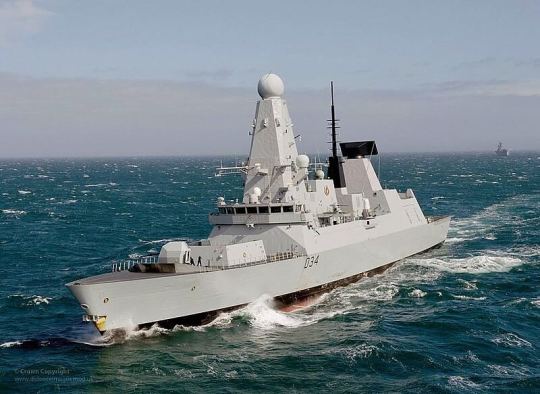
HMS Diamond at sea. Photo by Defence Images. Flickr. Ministry of Defence's Detailed Account Precision Strikes by the Royal Air Force Following the persistent threats by the Houthis against merchant ships and the direct targeting of HMS Diamond and US Navy vessels, a coordinated coalition response was agreed upon. Four RAF Typhoon FGR4s, supported by a Voyager air refueling tanker, expertly employed Paveway IV-guided bombs in precision strikes against key Houthi facilities. These facilities were critically involved in hostile acts against international shipping. Specifically, the strikes targeted a drone launch site at Bani and an airfield at Abbs, both notorious for launching cruise missiles and drones over the Red Sea. Furthermore, these strategic locations were selected for their significant role in escalating regional tensions and threatening maritime safety. Ensuring Civilian Safety Minimizing Collateral Damage In planning these precision strikes, the UK forces took extensive measures to minimize risks to civilians, including conducting the operations at night. While a detailed assessment of the strikes' outcomes is underway, early indications suggest a significant blow to the Houthis' capacity to threaten merchant shipping. The UK's commitment to protecting vital sea lanes, through which a significant portion of the world's shipping traverses, remains steadfast and resolute. Sources: THX News, Prime Minister's Office, 10 Downing Street, Ministry of Defence, The Rt Hon Rishi Sunak MP & Ministry of Defence. Read the full article
#GlobalShippingProtection#HMSDiamondPatrol#HouthiMilitaryTargets#InternationalTradeRoutes#RAFPrecisionBombing#RedSeaNavigation#RoyalAirForceStrikes#RoyalNavyOperations#UKMaritimeSecurity#YemenConflictResponse
2 notes
·
View notes
Text

I actually maintain that the country that "won" ww2 was Canada. So, like, both UK and USSR loose without constant supply convoys across the Atlantic from the US. The Germans knew this, so they had their submarines target these convoys. That's practically the only thing that the German Navy was good for for the entire war. This necessitated escort ships to defend the merchant fleets across the Atlantic. Escort ships that were predominantly crewed by Canadians.
5 notes
·
View notes
Text
Initially, I thought Cailitn and Connor were twins or at least the same class.
I'm going through and updating my Docs and Sheets on the characters right now, and I've been considering making them British engines instead of American engines. It just makes much more sense to me as well as helping with the size issue. American engines are typically massive. Take this photo of LMS 6229 Duchess of Hamilton (streamlined) and a BO P-7 class for example.
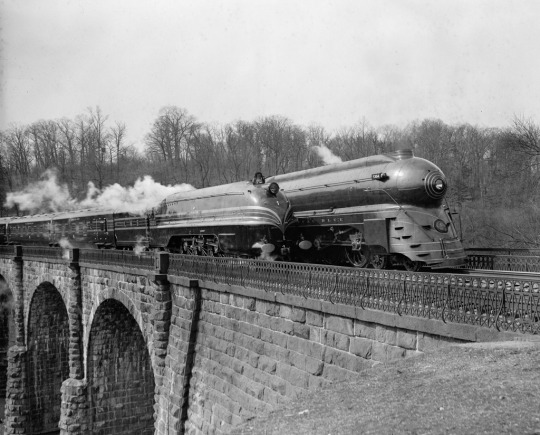
Source
To clarify, I love Caitlin and Connor as they are! Definitely two of my favorite CGI-only characters from T&F, but I just don't think their basis are correct for this. Think about it.
The Earl is ALL about preservation and to me, it just seems like he'd be more interested in preserving non-streamlined steam engines more than streamlined steam engines. Maybe that's a better reason as to why he chose Caitlin and Connor, but unless he's having them travel all over the United Kingdom, why would they be streamlined. Originally, I assumed they would go to Barrow-in-Furness from Ulfstead Castle with no stops, which is somewhat the case.
And then their size becomes the issue. I'm trying to stick as close as to real-life circumstances as I can, and having them be cut down to size isn't an option I want to default to when it comes to American steam engines working on the North Western Railway. I'm already using the "they were just built different for UK railways" storyline for another character.
So I'm currently considering the following locomotives:
LNER A4s: I know I questioned the streamlining situation but I think it makes more sense for them if I do have them travel the majority of the United Kingdom to collect passengers for Ulfstead Castle. This would be an interesting option because they'd act so differently to Spencer, considering they're privately owned like him.
LMS Coronation Class: This is could work either way because I'm also considering the possibility that the journeys had to be stopped at Barrow-in-Furness when dieselisation happened and the last of the steam engines were withdrawn from service. At that point, streamlining is unnecessary so the casings are removed.
LMS Princess Royal Class: If I decide not to go the streamlined route or I want to make one of them a different class.
These were chosen for multiple reasons, those being:
I would like to keep the single survivors as they are, like Blue Peter, Tornado, Flying Scotsman, and Duke of Gloucester, which they will be joined by Hengist, a BR Standard 6. This already knocks off the LNER Gresley A3s, LNER Peppercorn A1s, LNER Peppercorn A2s, BR Standard 8, and BR Standard 6.
Go for a class that isn't made up of one example, such as the single BR Standard Class 8, Duke of Gloucester, and GWR 111, The Great Bear.
Cannot be classes that have already been used, keeping that heavy diverse of classes on the Island of Sodor and character roster in general. This knocks off the SR Merchant Navies, as well as the SR Battle of Britians and West Countries, and the LMS Royal Scots, rebuilt and unrebuilt for all three.
Not to use any recent classes, specifically BR. This crosses off the BR Standard 7.
Drop classes that wouldn't have survived by at least the 1950s. This crosses out the LNER Raven A2s and GWR 111.
The 4-8-4 configuration is a definte "No." It was considered to be too much by the LNER when the Hush Hush was released into traffic. Even though it was rebuilt with the body of a A4, it still retained its wheel configuration. It just seems too much for the NWR, considering its size. Its slightly bigger than the Furness Railway from what I've gathered. (If not, they're about the same size.)
These are the engines from the UK that I have listed so far, so I have still have more classes to sift through. The American steam engines are already a "No," due to their massive size. I have the following that could be really good candidates, because I'm pretty damn sure the Earl would love to preserve/operate a foreign engine. It just screams like something he would do. However, this list contain streamliners.
New South Wales C38 class: This one because they look similar to the Hudsons. Like the LMS Coronations, their casings can be removed to unveil the nonstreamlined version. Built in the 1940s.
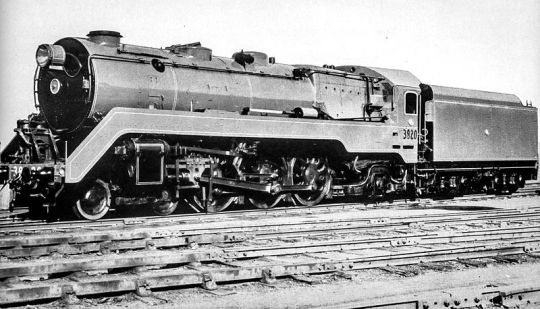
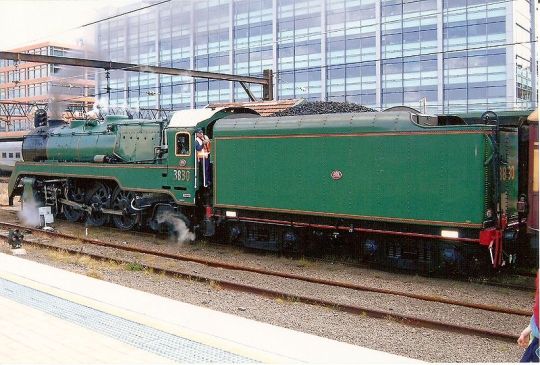


Source: Wikipedia
Iraqi State Railways PC class: Similar design to the streamlined LMS Coronations with the valenced similar to those of the LNER Gresley A4s. Purely streamlined. I haven't found a photo where its not streamlined. Built in the 1940s. Only international option I've chosen that doesn't have any survivors to this day.

Source
DRB Class 01.10: Another streamlined engine that can have its casings removed. Built in the 1930s.


Source: Wikipedia
"But wait a minute, you just said this about the streamliners-" yeah I did but here's the thing. Connor and Caitlin are KNOWN AS streamliners. They're known to be different to the other engines and extremely fast. I would like to keep that as the first thing you know about them. They're ✨ streamlined ✨.
But then here comes another issue (this is post is so damn long- wut 😭)
I want to make "Best Engine Ever" canon to EoSR but I can't think I can pull off how dangerous it becomes since all of the examples I've mentioned have front buffers and they don't really have skirts, excluding the Iraqi State Railways PC class.
With all of this taken into consideration, I'm definitely leaning towards the New South Wales C38 as Connor's basis, just because the front reminds me of his T&F basis. They're green which is closer to the teal/blue Conor is originally in. As for Caitlyn, I'm somewhat considering the Iraqi State Railways PC class. It's a very good candidate, in my opinion, but the paintwork is what's throwing it off. I don't want to end up with two green engines, though it looks like the PCs used a mint green.
I'm just not entirely convined by the UK steam engines, though technically the Iraqi State Railways PC engine is English since this basis was built in England.
These classes were built mostly before BR era (C38s: January 1943 - November 1949 & PCs: 1940), they look smaller than the American engines and about the same size as the UK built engines, and they have visual aspects that remind me of their original basis from Thomas and Friends. Neither class only has a sole survivor. The Iraqi State Railway PCs having no surivors while the New South Wales C38s have four survivors. Neither class is made up of one example or been used as a basis for another character. Both classes survived past the 1950s and early-1960s, with the lastest withdrawal being that of a C38 in 1970.
So this is my overly-complicated and probably unnecessary analysis/research for Connor and Caitlin's new basis because I'm weird and want to stick as close to the real-world as much as I can. I wrote this within the span of two days because i was doing research as I was writing this so consider this post as a bunch of notes (which is part of the reason why I kept contradicting myself when it came to streamlining 🤡).
#muxse meeps#ttte caitlin#ttte connor#the rewritten railway au#long post#tw long post#cw long post#not my photos#pretty sure this is my longest post 😭#ty Tumblr for having the ''Read More'' feature :''''D#cerenemuxse
5 notes
·
View notes
Photo





Huge key art (18,750px aka 62.5 inches wide!) for U-boat Wargamers on Sky History UK. January 1943: Britain is on the brink of starvation from ruthless Nazi attacks on merchant ships. The Navy cannot spare any men. Enter the WRNS (Women’s Royal Navy Service) to war game the tactics to defeat the enemy U-Boats.
#history channel#u-boat#u-boat wargamers#wargamer#wargame#war game#war gamer#WRNS#women's royal navy service#wwii#world war ii#german u-boat#u boat#submarine#battle of the atlantic#military strategy#military tatctics#navy#royal navy
3 notes
·
View notes
Text
On a warm spring night in Athens, shortly before midnight, a senior executive at a Greek shipping company noticed an unusual email had landed in his personal inbox.
The message, which was also sent to the manager's business email address, warned that one of the company's vessels travelling through the Red Sea was at risk of being attacked by Yemen's Iranian-backed Houthi militia.
The Greek-managed ship had violated a Houthi-imposed transit ban by docking at an Israeli port and would be "directly targeted by the Yemeni Armed Forces in any area they deem appropriate," read the message, written in English and reviewed by Reuters.
"You bear the responsibility and consequences of including the vessel in the ban list," said the email, signed by the Yemen-based Humanitarian Operations Coordination Center (HOCC), a body set up in February to liaise between Houthi forces and commercial shipping operators.
The Houthis have carried out nearly 100 attacks on ships crossing the Red Sea since November, acting in solidarity with Palestinians in Israel's year-long war in Gaza. They have sunk two vessels, seized another and killed at least four seafarers.
The email, received at the end of May, warned of "sanctions" for the entire company's fleet if the vessel continued "to violate the ban criteria and enter the ports of the usurping Israeli entity".
The executive and the company declined to be named for safety reasons.
The warning message was the first of more than a dozen increasingly menacing emails sent to at least six Greek shipping companies since May amid rising geopolitical tension in the Middle East, according to six industry sources with direct knowledge of the emails and two with indirect knowledge.
Since last year, the Houthis have been firing missiles, sending armed drones and launching boats laden with explosives at commercial ships with ties to Israeli, U.S. and UK entities.
The email campaign, which has not been previously reported, indicates that Houthi rebels are casting their net wider and targeting Greek merchant ships with little or no connection to Israel.
The threats were also, for the first time in recent months, directed at entire fleets, increasing the risks for those vessels still trying to cross the Red Sea.
"Your ships breached the decision of Yemen Armed Forces," read a separate email sent in June from a Yemeni government web domain to the first company weeks later and to another Greek shipping company, which also declined to be named. "Therefore, punishments will be imposed on all vessels of your company ... Best Regards, Yemen Navy."
Yemen, which lies at the entrance to the Red Sea, has been embroiled in years of civil war. In 2014, the Houthis took control of the capital, Sanaa, and ousted the internationally recognized government. In January, the United States put the Houthis back on its list of terrorist groups.
Contacted by Reuters, Houthi officials declined to confirm they had sent the emails or provide any additional comment, saying that was classified military information.
Reuters could not determine whether the emails had been also sent to other foreign shipping companies.
Greek-owned ships, which represent one of the largest fleets in the world, comprise nearly 30% of the attacks carried out by Houthi forces to early September, according to Lloyd's List Intelligence data that did not specify whether those ships had any ties with Israel.
In August, the Houthi militia - which is part of Iran's Axis of Resistance alliance of anti-Israel irregular armed groups - attacked the Sounion tanker leaving it on fire for weeks before it could be towed to a safer area.
The strikes have prompted many cargoes to take a much longer route around Africa. Traffic through the Suez Canal has fallen from around 2,000 transits per month before November 2023 to around 800 in August, Lloyd's List Intelligence data showed.
Tensions in the Middle East reached a new peak on Tuesday as Iran hit Israel with more than 180 missiles in retaliation for the killing of militant leaders in Lebanon, including Hezbollah leader Sayyed Hassan Nasrallah on Friday.
NEW PHASE
The European Union's naval force Aspides, which has helped more than 200 ships to sail safely through the Red Sea, confirmed the evolution of Houthis' tactics in a closed door meeting with shipping companies in early September, according to a document reviewed by Reuters.
In the document, shared with shipping companies, Aspides said the Houthis' decision to extend warnings to entire fleets marked the beginning of the "fourth phase" of their military campaign in the Red Sea.
Aspides also urged ship owners to switch off their Automatic Identification System (AIS) transponders, which shows a vessel's position and acts as a navigational aid to nearby ships, saying they had to "shut it off or be shot".
Aspides said the Houthis' missile strikes had 75% accuracy when aimed at vessels operating with the AIS tracking system on. But 96% of attacks missed when AIS was off, according to the same briefing.
"Aspides are aware of those emails," its operational commander, Rear Admiral Vasileios Gryparis, told Reuters, adding that any response should be carefully considered and that companies are strongly advised to alert their security experts if contacted before sailing.
"In particular, for the HOCC, the advice or guidance is not to respond to VHF calls and e-mails from “Yemeni Navy” or the “Humanitarian Operations Command Center” (HOCC)."
The Houthis' email campaign began in February with messages sent to shipowners, insurance companies and the main seafarers union from HOCC.
These initial emails, two of which were seen by Reuters, alerted the industry the Houthis had imposed a Red Sea travel ban on certain vessels, although they did not explicitly warn companies of an imminent attack.
The messages sent after May were more menacing.
At least two Greek-operated shipping companies that received email threats have decided to end such journeys via the Red Sea, two sources with direct knowledge told Reuters, declining to identify the companies for security reasons.
An executive at a third shipping company, which has also received a letter, said they decided to end business with Israel in order to be able to continue to use the Red Sea route.
"If safe transit through the Red Sea cannot be guaranteed, companies have a duty to act – even if that means delaying their delivery windows," said Stephen Cotton, General Secretary of the International Transport Workers' Federation, the leading union organisation for seafarers, which received an email from HOCC in February. "The lives of the seafarers depend on it."
The email campaign has increased alarm among shipping companies. Insurance costs for Western ship owners' have already jumped because of the Houthi's attacks, with some insurers suspending cover altogether, the sources told Reuters.
Greece-based Conbulk Shipmanagement Corporation stopped Red Sea voyages after its vessel MV Groton was attacked twice in August.
"No (Conbulk) vessel is trading in the Red Sea. It mainly has to do with the crew safety. Once the crew is in danger, all the discussion stops," Conbulk Shipmanagement CEO Dimitris Dalakouras told a Capital Link shipping conference in London on Sept. 10.
Torben Kolln, managing director of German-based container shipping group Leonhardt & Blumberg, said the Red Sea and wider Gulf of Aden was a "no go" area for their fleet.
Contacted by Reuters, the companies did not respond to a request for comment on whether they had been targeted by the Houthi email campaign.
Some companies continue to cross the Red Sea due to binding long-term agreements with charterers or because they need to transfer goods in that particular area. The Red Sea remains the fastest way to bring goods to consumers in Europe and Asia.
The Houthis have not stopped all traffic and the majority of Chinese and Russian-owned ships - which they do not see as affiliated with Israel - are able to sail through unhindered with lower insurance costs.
"We are re-assuring the ships belonging to companies that have no connection with the Israeli enemy that they are safe and have freedom (of movement) and (to) keep the AIS devices going on all the time," according to an audio recording of a Houthi message broadcast to ships in the Red Sea in September shared with Reuters.
"Thank you for your cooperation. Out."
2 notes
·
View notes
Text
Important to note:
On Wednesday, the United Nations Security Council passed a US- and Japan-led resolution condemning “in the strongest terms the at least two dozen Houthi attacks on merchant and commercial vessels since November 19, 2023” and demanding “that the Houthis immediately cease all such attacks.” Eleven countries voted in favor of the resolution. Four abstained, including China and Russia. A Western diplomat told CNN that the US accommodated some of China’s requests on the language of the resolution.
and
... many of the commercial vessels have had no connection to Israel. Vice Adm. Bradley Cooper, the commander of US Navy Central Command, said last week that the US assesses 55 nations have “direct connections” to the ships that have come under fire.
There seems to be some conflicting info on whether or not the Houthi's are ONLY targeting Israeli ships, and the fact that most of the UN are in agreement (when everyone EXCEPT the US is pissed as hell at Israel) makes me less inclined to think its quite that black and white.
The US and UK are now bombing Yemen because the country had the courage to fight for Palestine and stop the genocide by targeting the ships on the sea that provides weapons to Israel. The cruelty of the US is immeasurably evil and petty because this is also the same empire that backed the UAE/KSA coalition that bombarded Yemen and starved the people forcing the children to suffer from malnutrition for years and now decides to bomb the same country again so Israel can continue unabated in committing genocide and ethnic cleansing.
#for those looking for sources and panicking about things#it def seems like the Houthis are anti-Israel (good) but other sources confirm that they're not limiting their fire to ONLY Israeli ships?#do your own research + I don't live in Yemen so I'm not an expert + etc
8K notes
·
View notes
Text



"Operation Archery" Vågsøy and Måløy raid, Norway. 27 December 1941.
Commando Lieutenant Denis O'Flaherty being helped through the snow to a dressing station. The Commando on the right with a fixed bayonet is Commando Derek Gordon Page.
The intention of the raid on Vaagso and Maaloy was to destroy fish oil factories and sink enemy shipping.
Air- Bomber Command and Coastal Command;
Sea - Cruiser H.M.S. Kenya, Landing Ships H.M.S. Leopold and Prince Charles, Submarine H.M.S. Tuna plus four destroyers;
Land - No 3 Commando, two troops of No 2 Commando, a medical detachment from No. 4 Commando and demolition experts from No. 6 Commando, a Royal Norwegian Army Detachment.
Outcome (positive) - successful destruction of coastal defences, oil and fish factories, radio transmitters, stores, a lighthouse, a power station, 9 merchant ships totalling 15,000 tons and four Heinkels. 30,000 additional German troops deployed to the Norwegian sector taken from other fronts but notably the Atlantic Wall. 150 Germans killed, 98 captured and 71 Norwegians took passage to the UK.
Outcome (negative) - Commandos: 2 Officers and 15 OR killed, 5 Officers and 48 OR wounded, Norwegians: 1 Officer killed and 2 OR wounded, Royal Navy 2 OR killed and 2 Officers and 4 OR wounded and RAF 31 killed (2 Hampden's, 7 Blenhiem's and 2 Beaufighters were lost).
Lt. O'Flaherty's daughter Marye Humphery added this ".... my understanding is that a machine gun was placed in an upper floor of the warehouse, pinning down his men. He stormed up the stairs and managed to take out the post, but received 5 bullets in his face and head. One took out his eye and one side of his jaw, another shattered the atlas bone in his neck (the bone that holds your head up). He was in hospital/recovering for two years. They took out one of his ribs and put it in his neck. This later broke and had to be replaced with metal (I believe this happened when he was injured crossing the Rhine). He wore a black patch for the rest of his serving career and was probably the only one eyed gunner in Korea." (Whilst in Korea he was awarded the American Bronze Star on the 8th June 1951).
He ended his military career as a Brigadier in 1975 and died in March 1980 at the age of 59.
Commando Derek Gordon Page subsequently left the commandos and served with the Gurkas in India, fighting in Burma and eventually ending the war in Indonesia.
(Photo source - © IWM N 495)
War Office official photographer - Malindine E G (Lt)
(Colourised by Richard James Molloy from the UK)
0 notes

